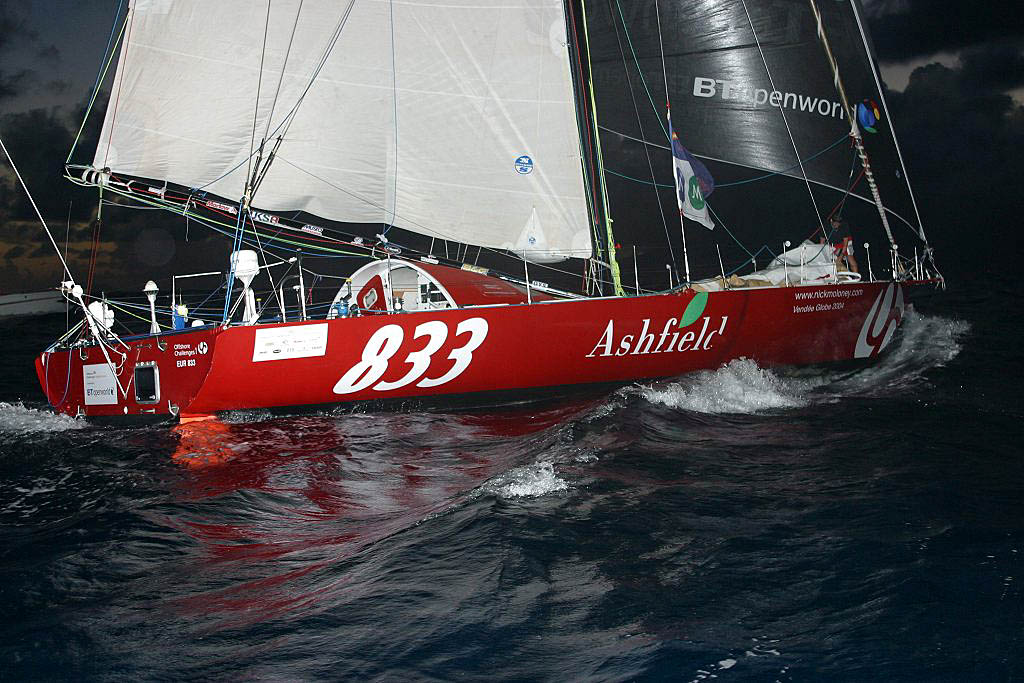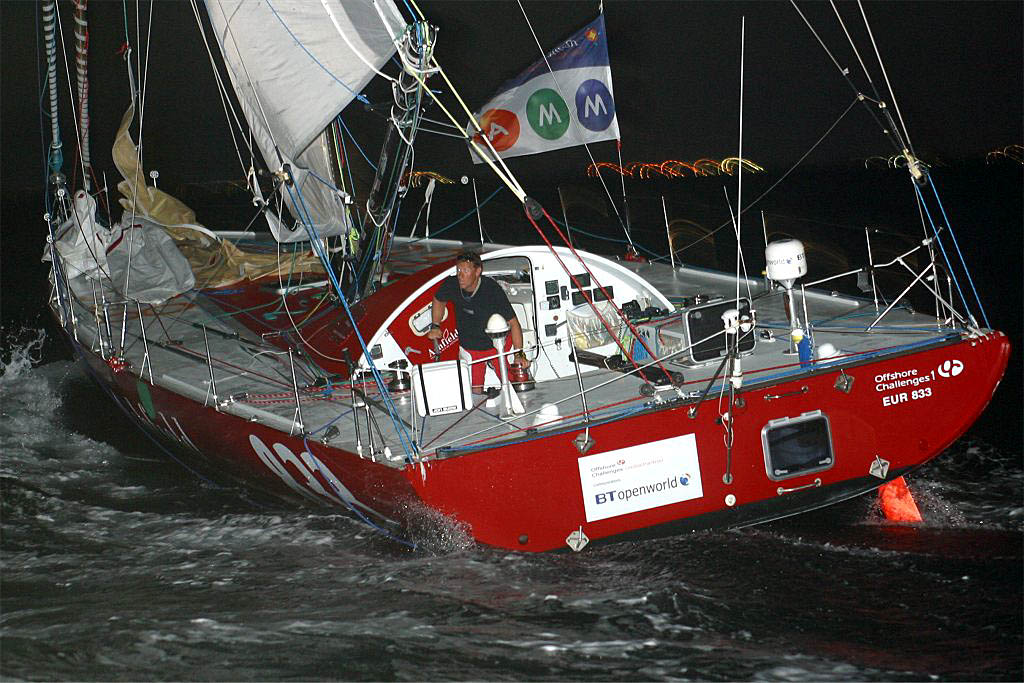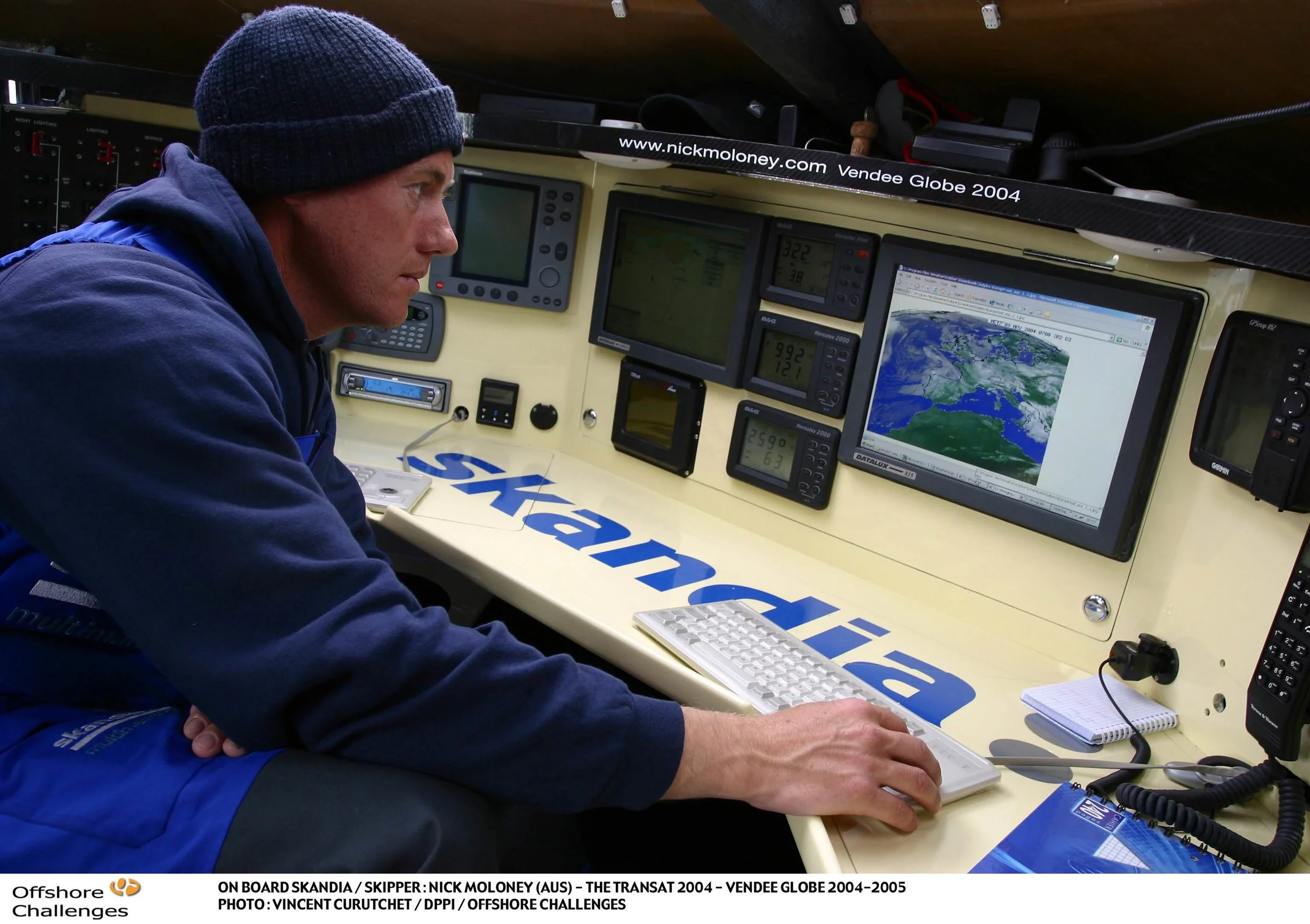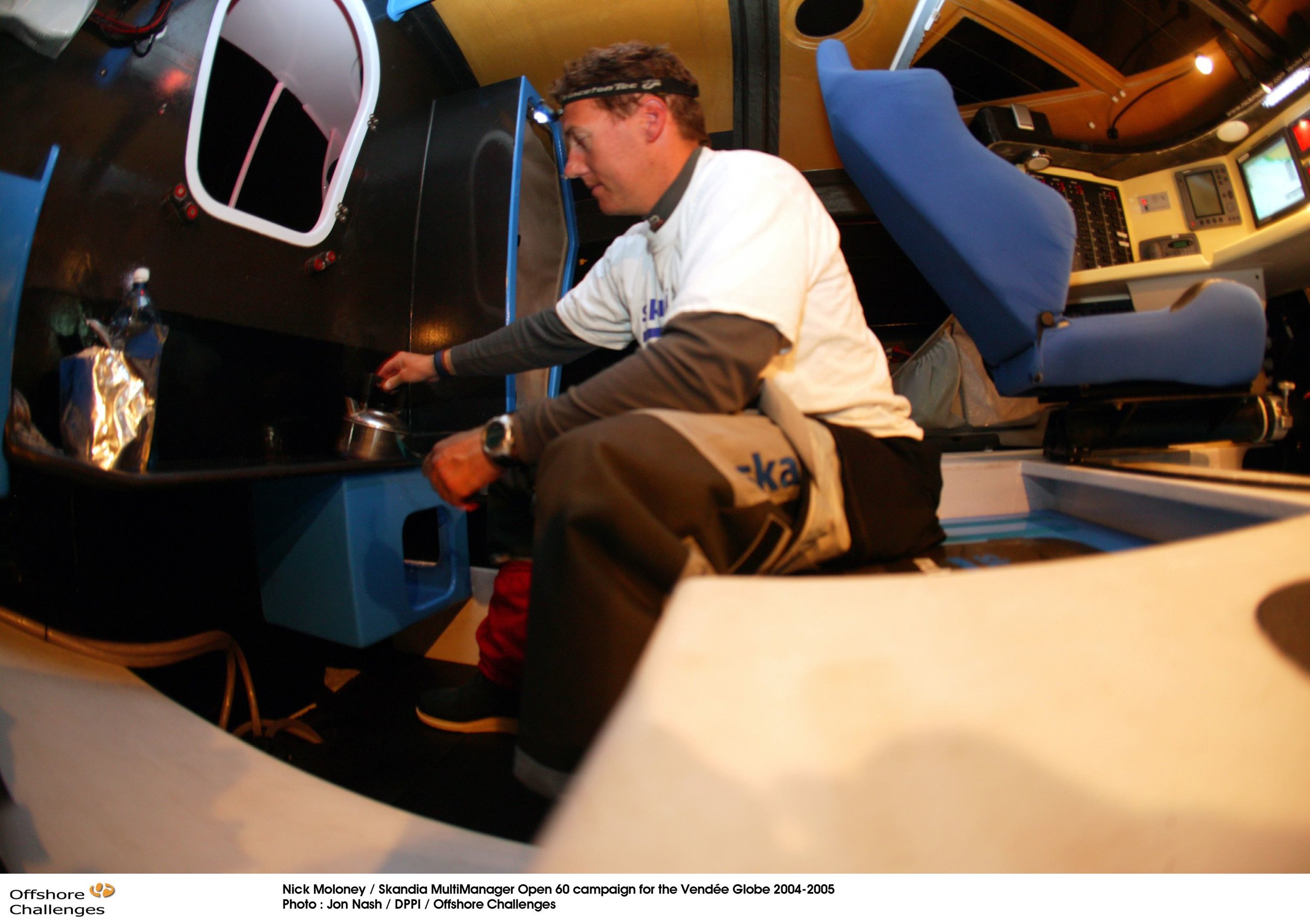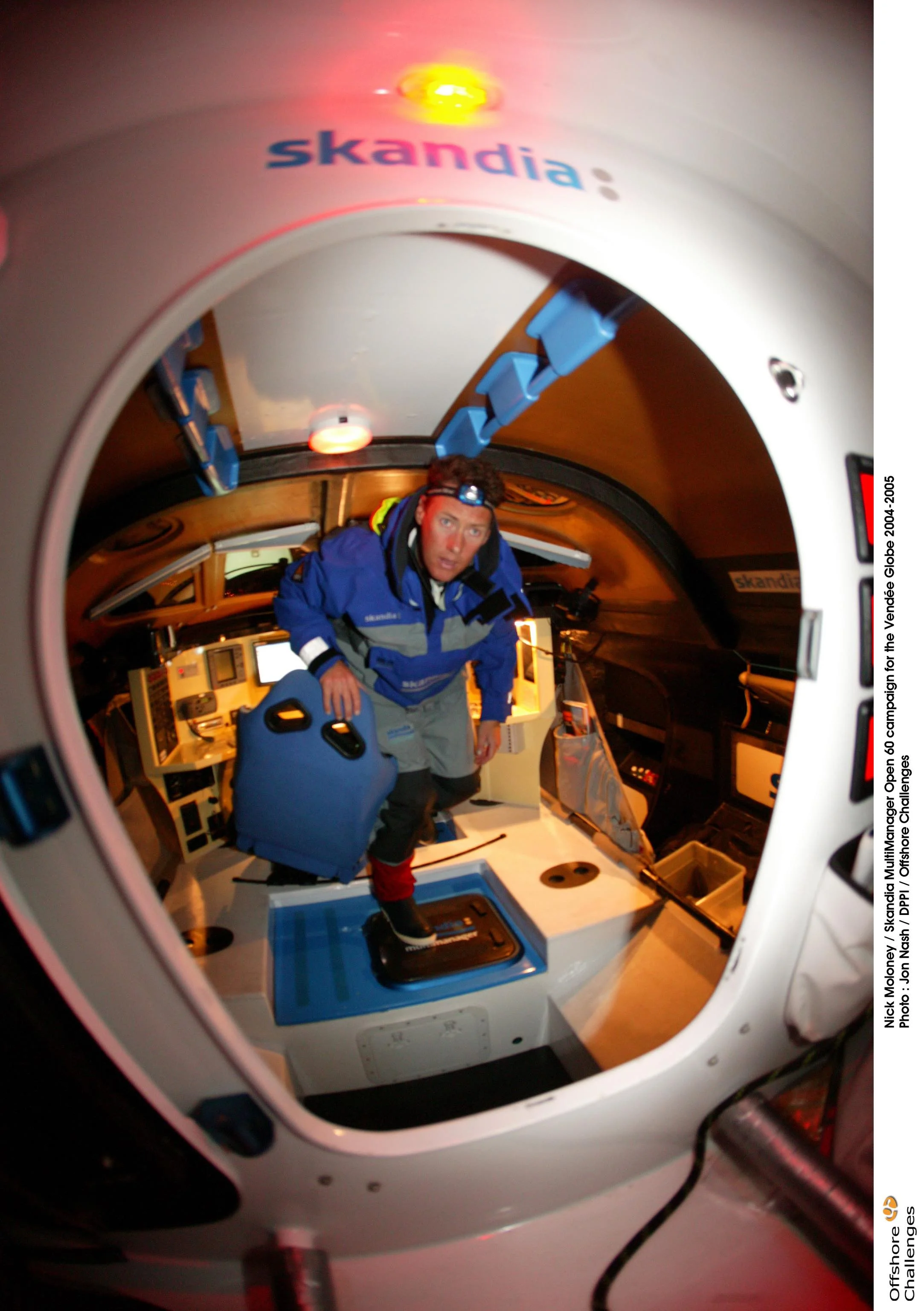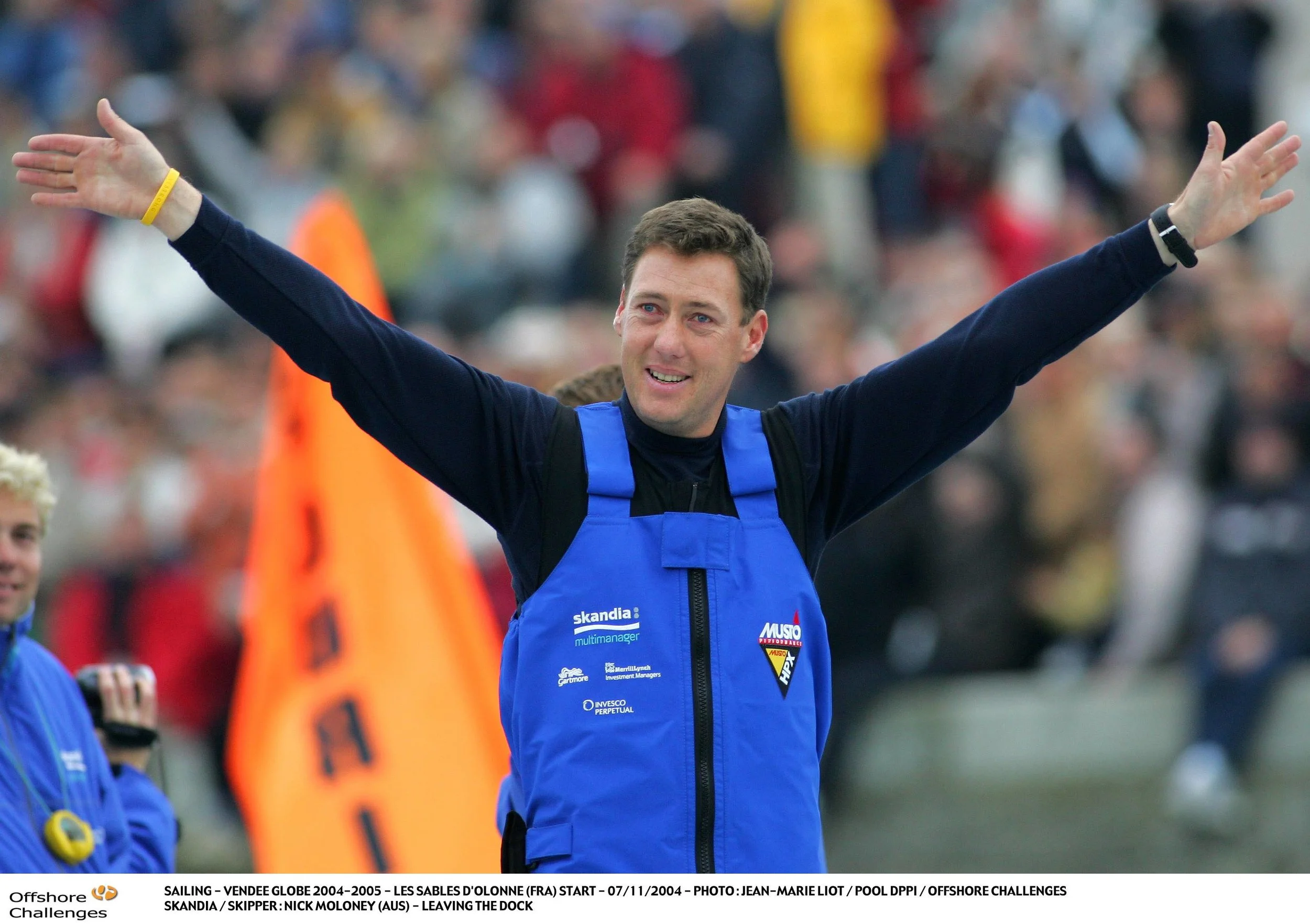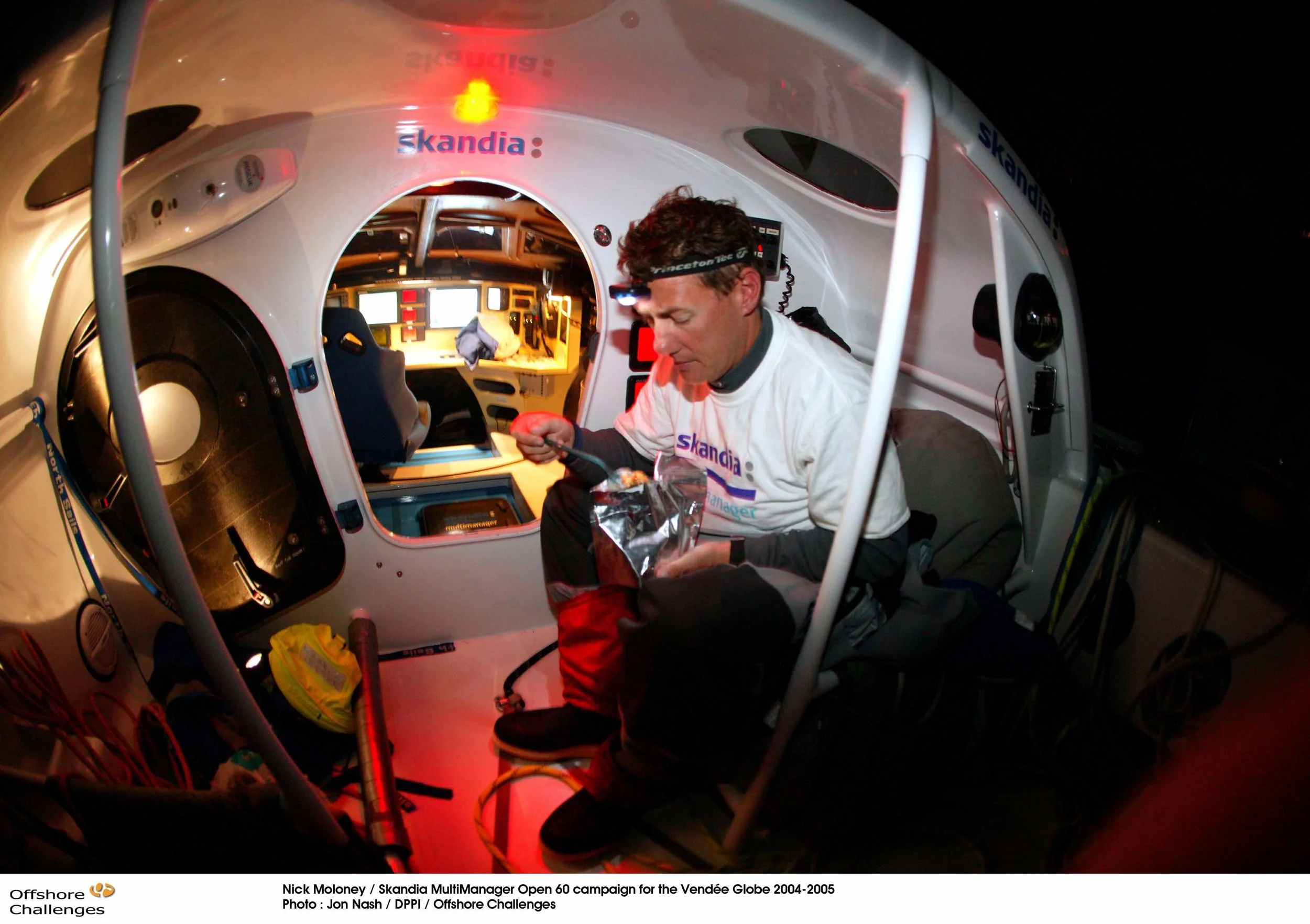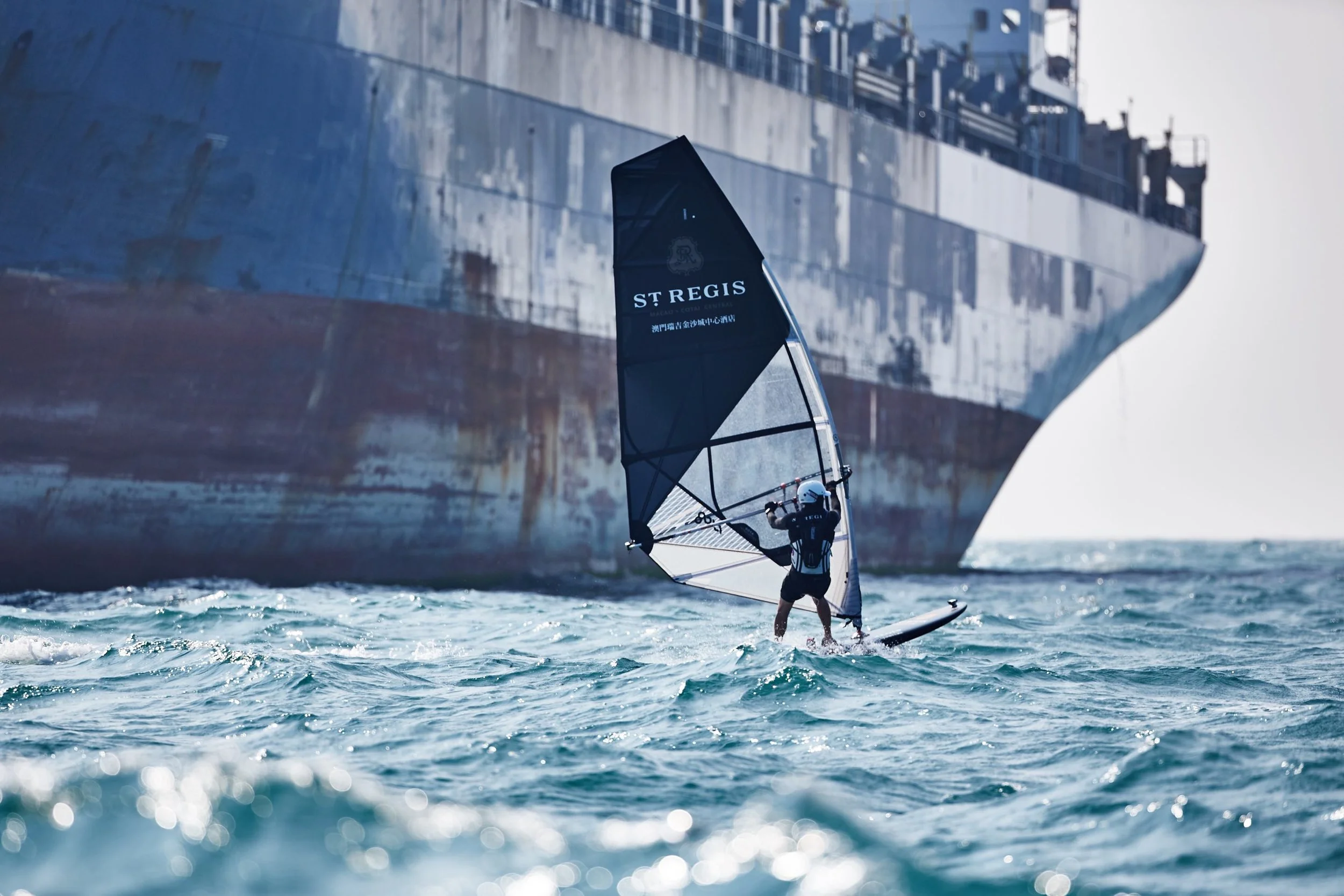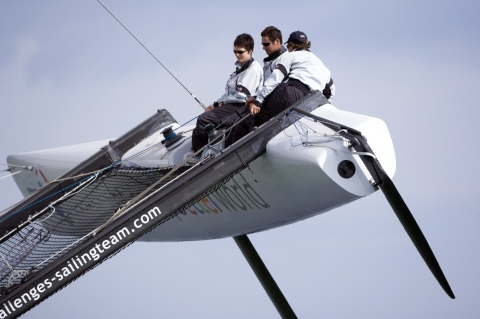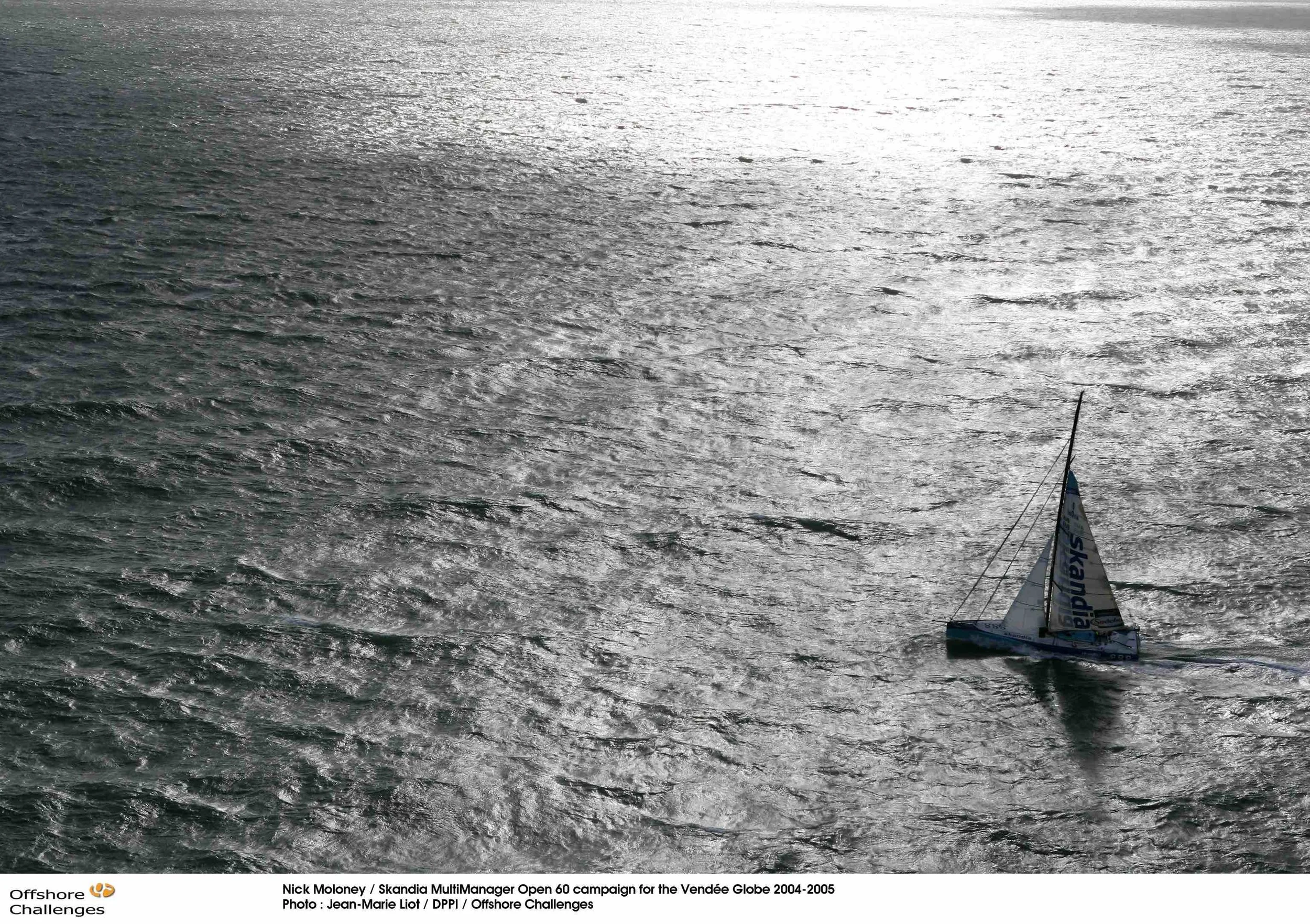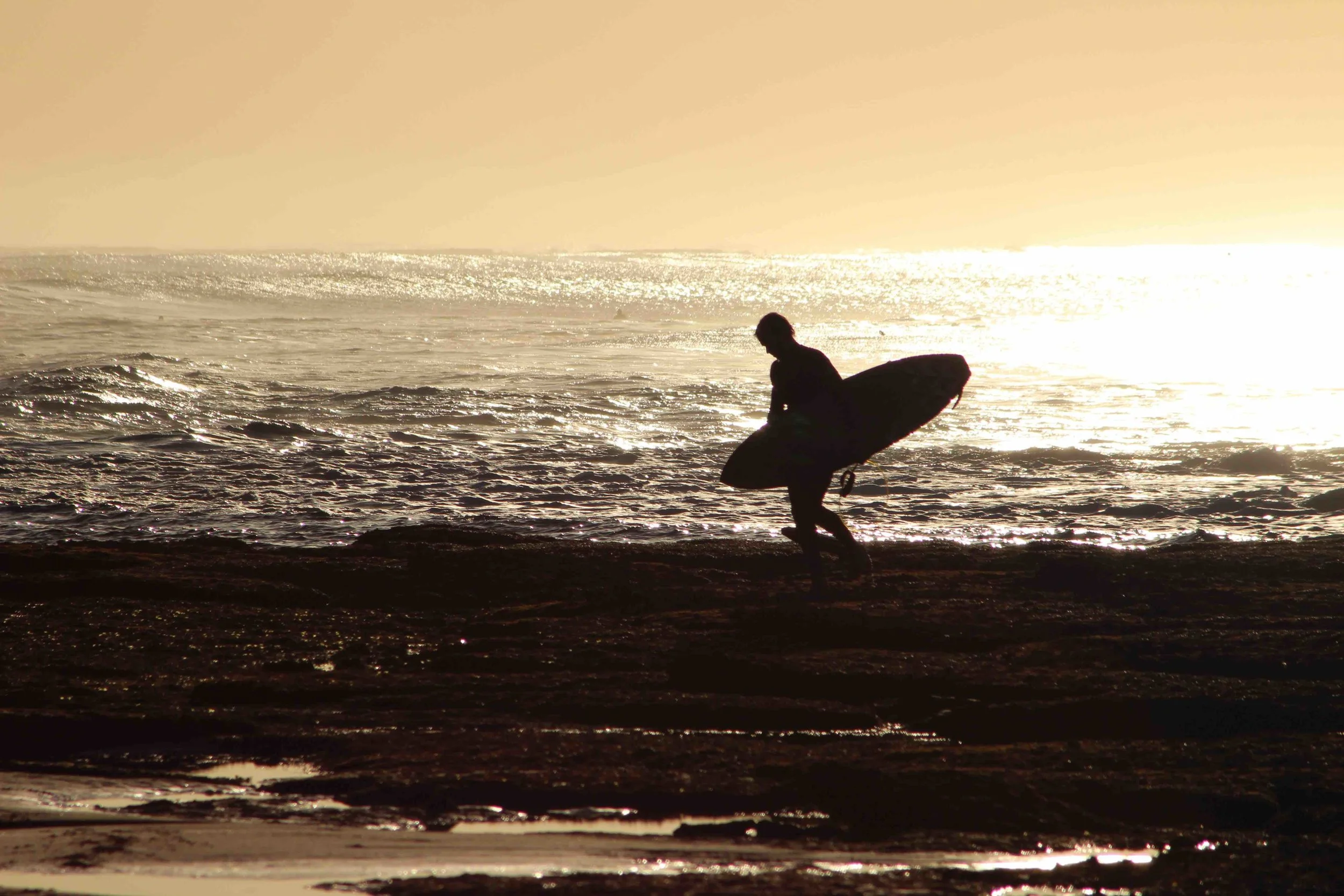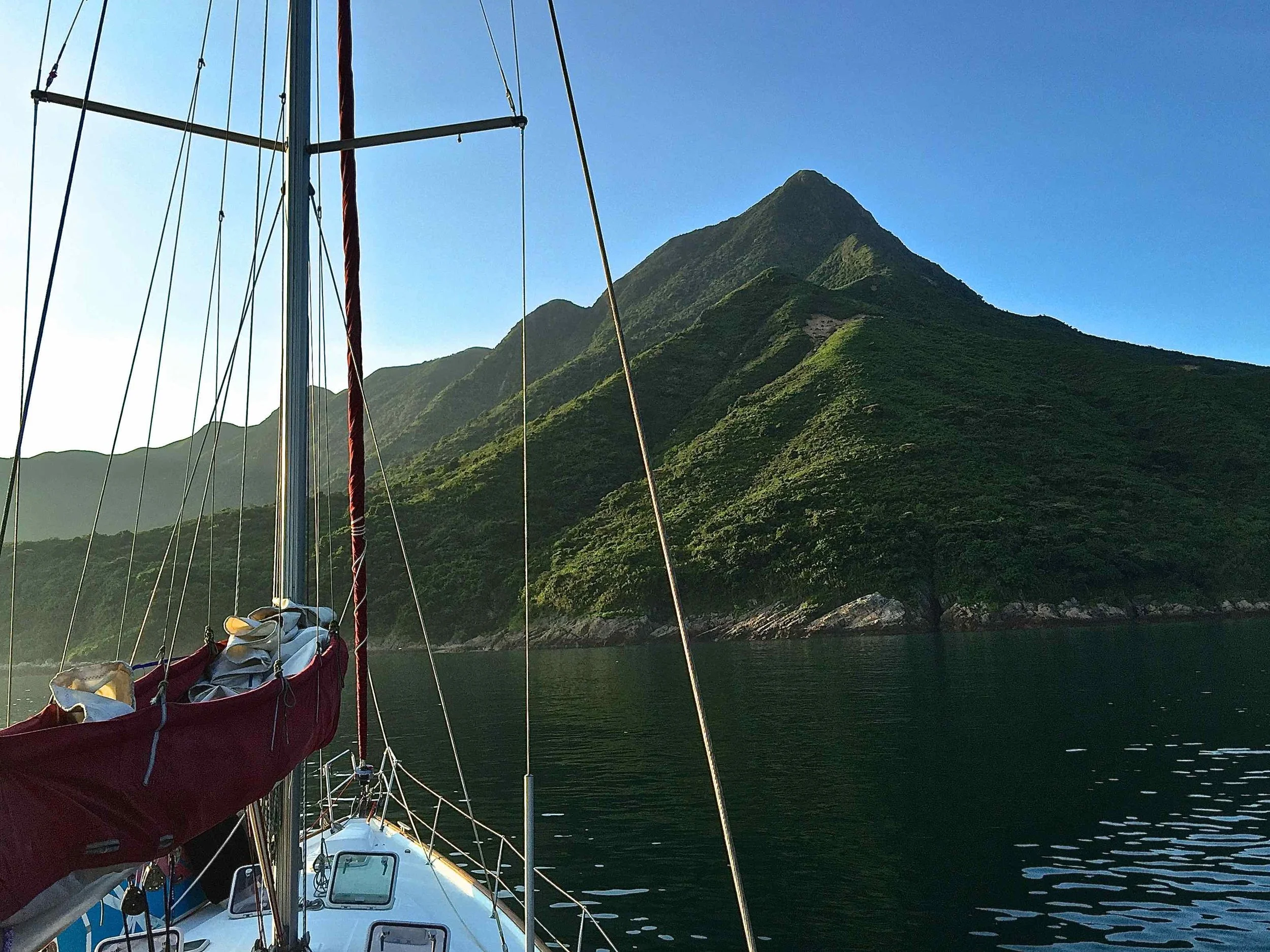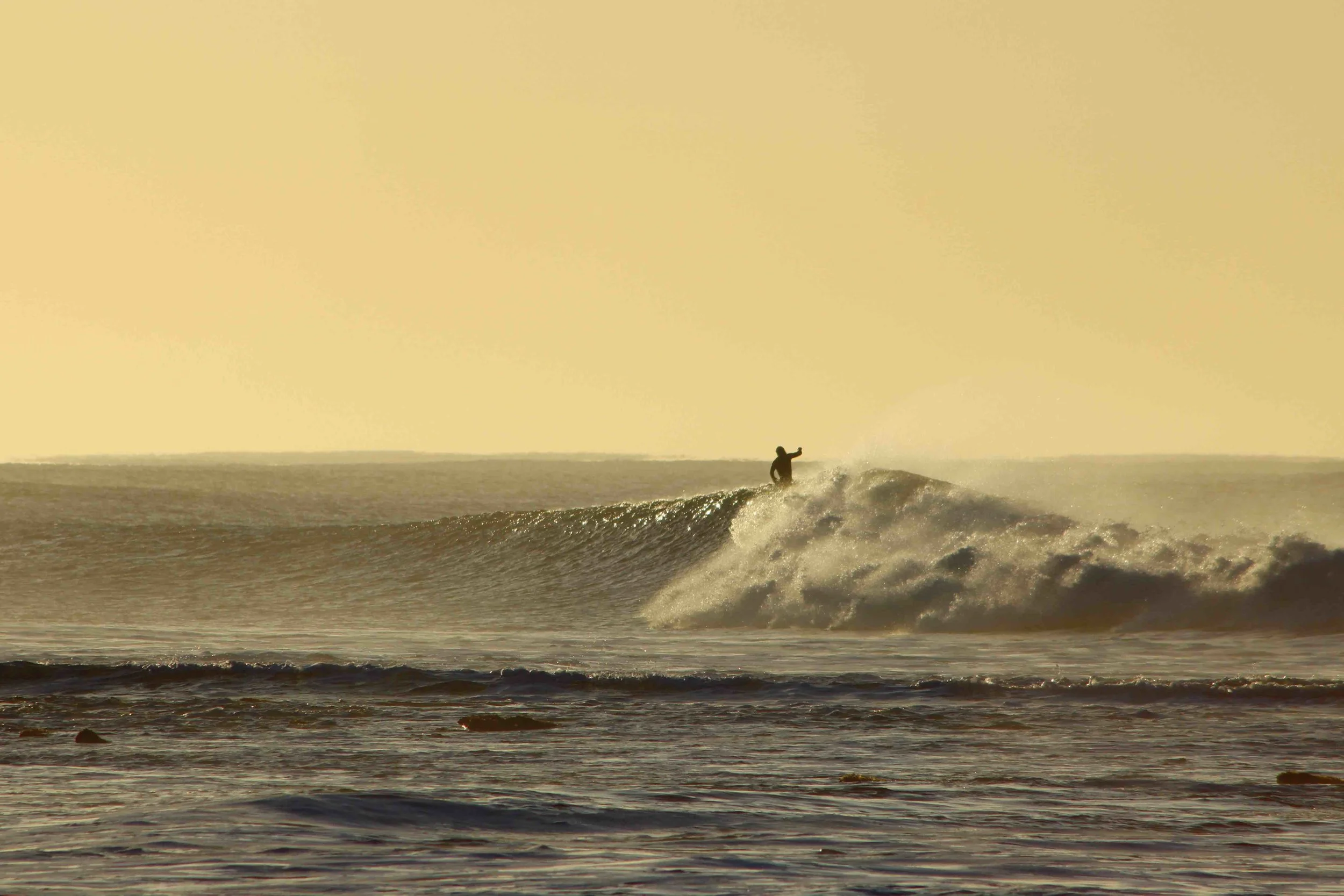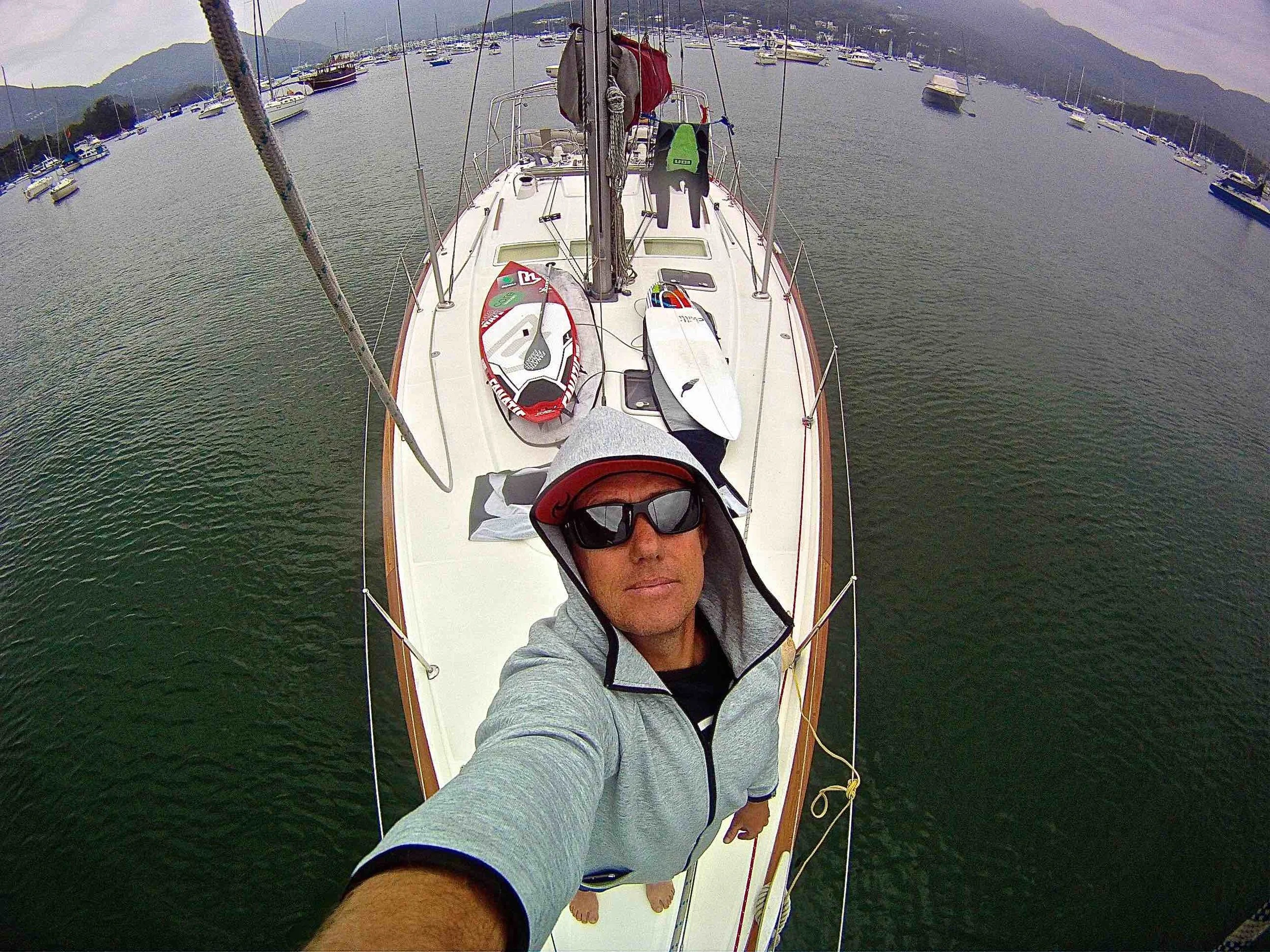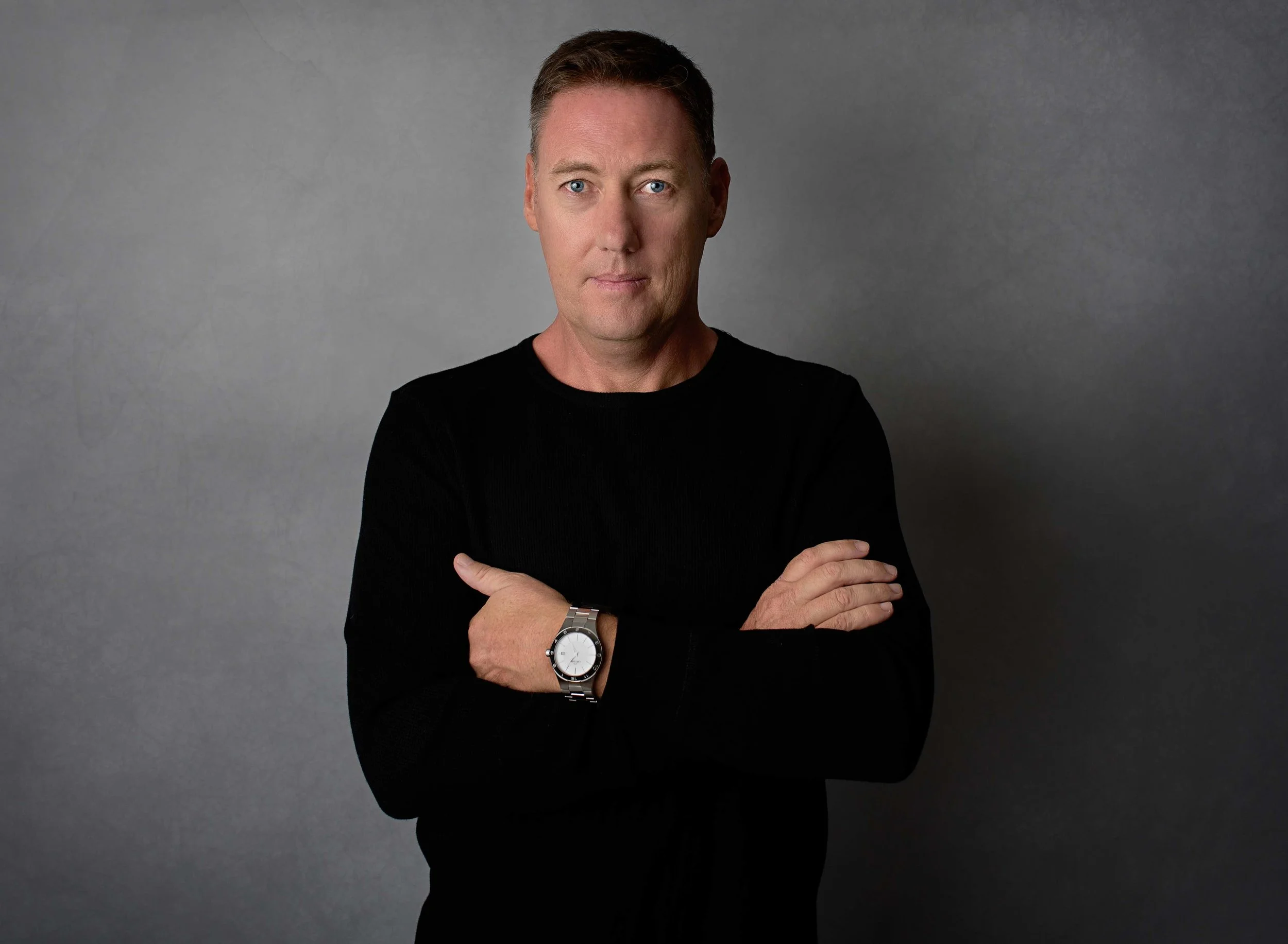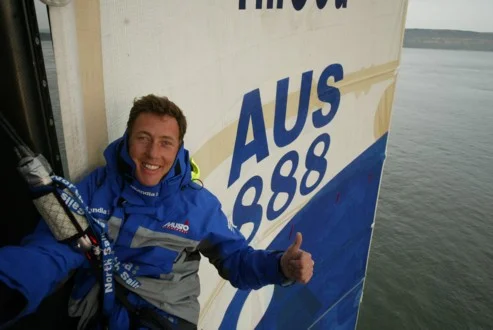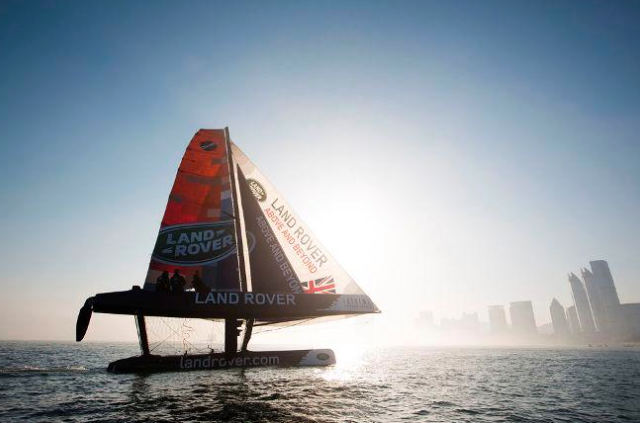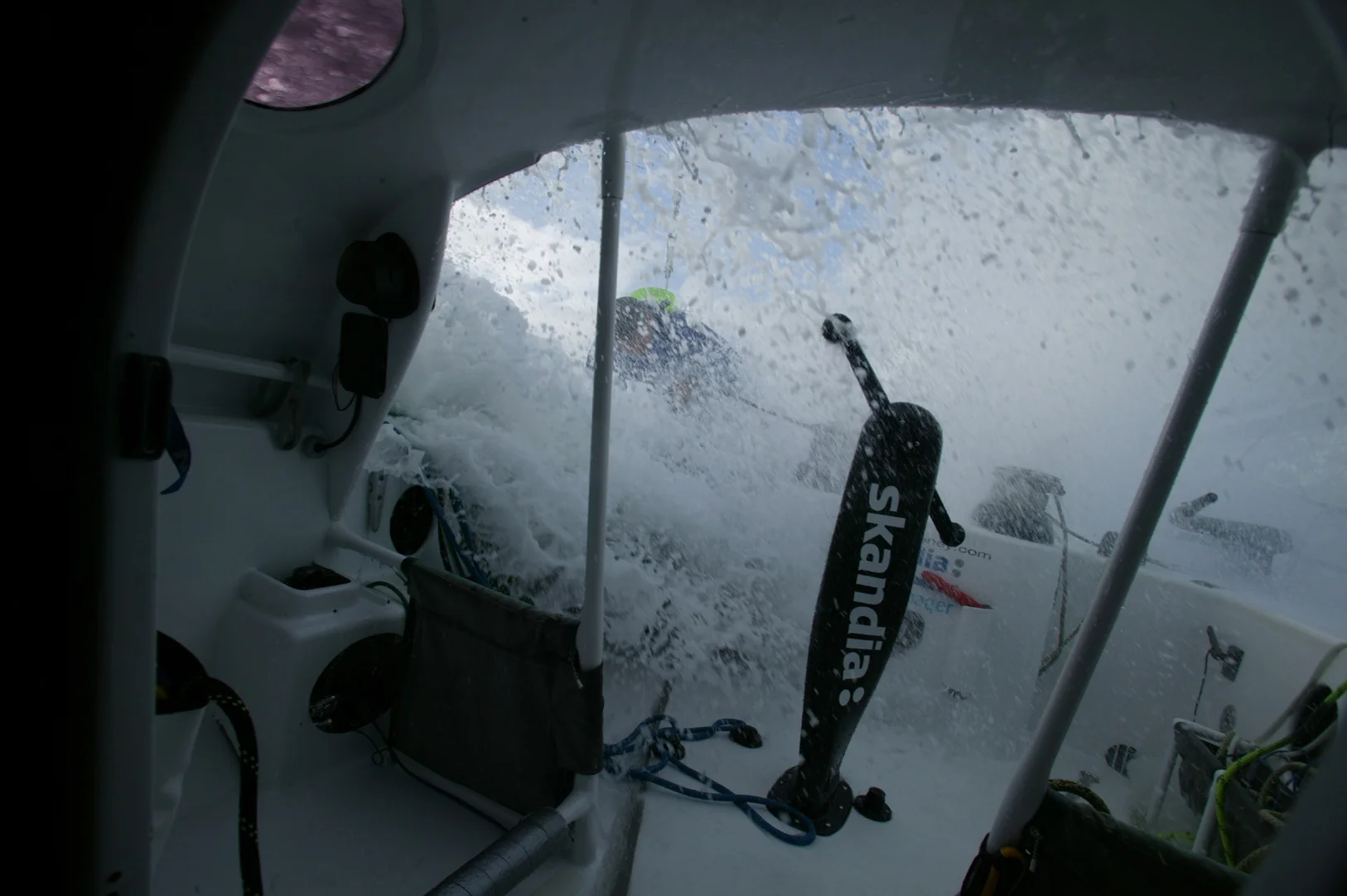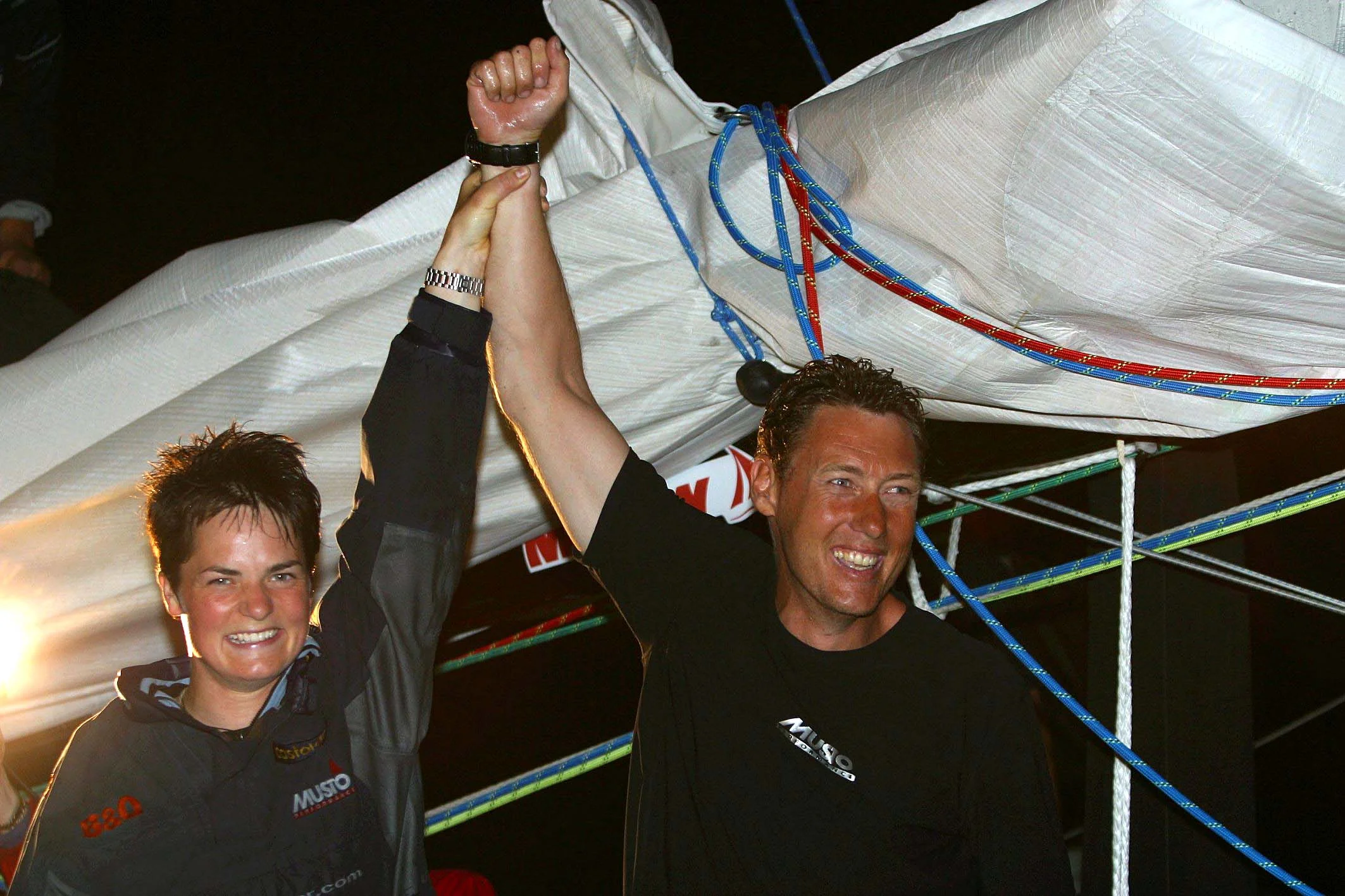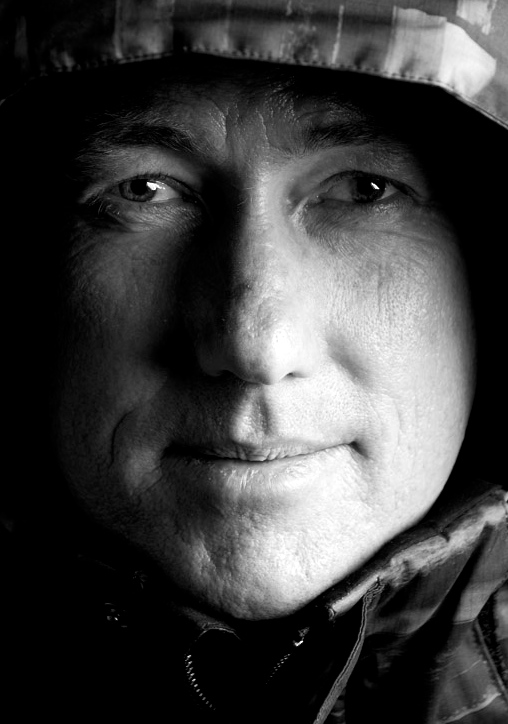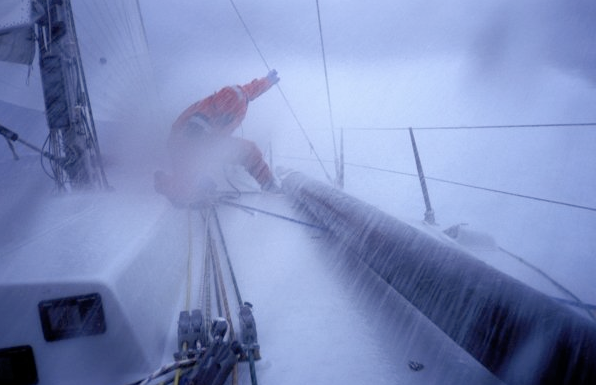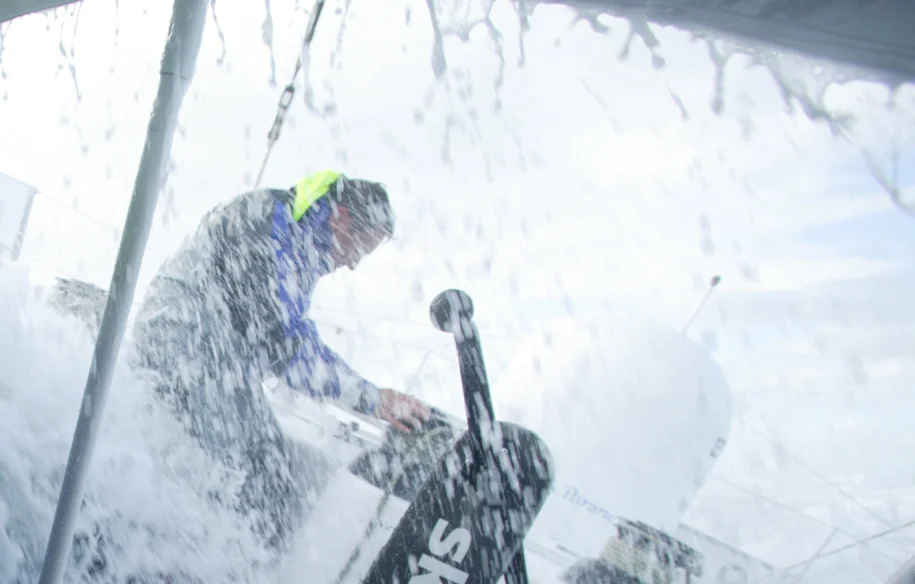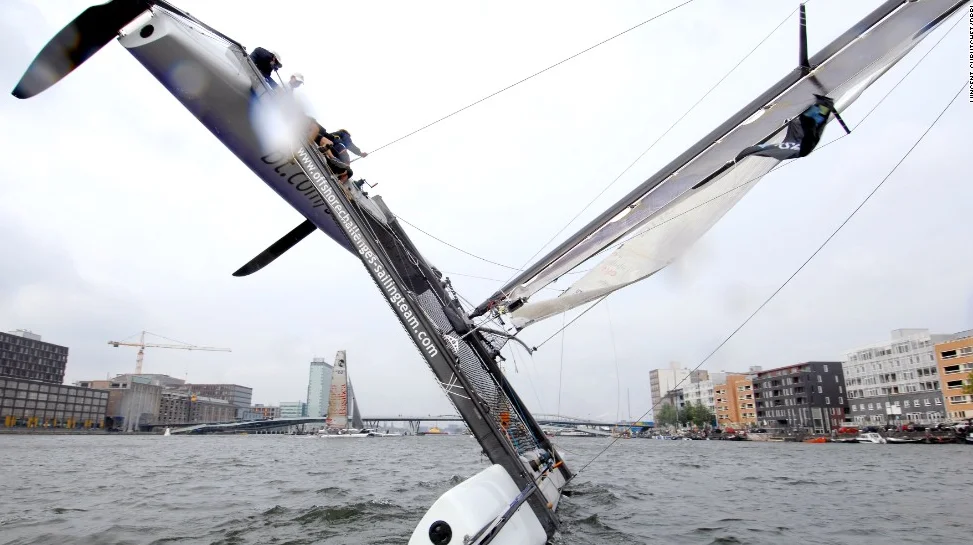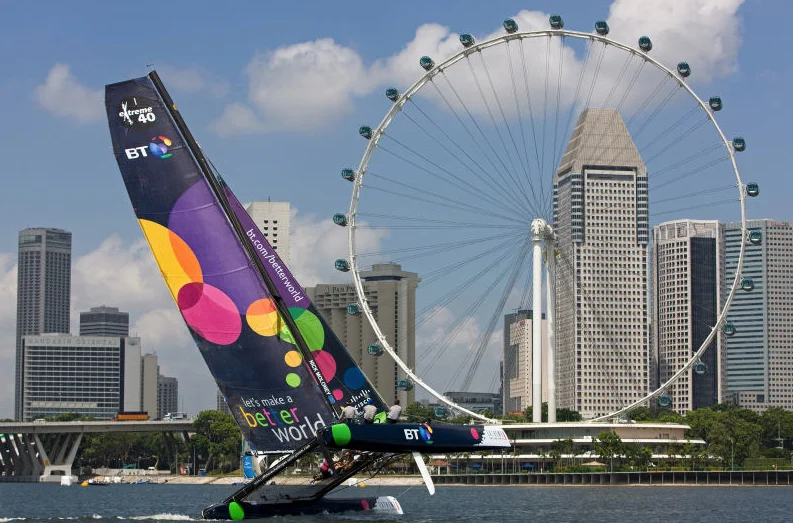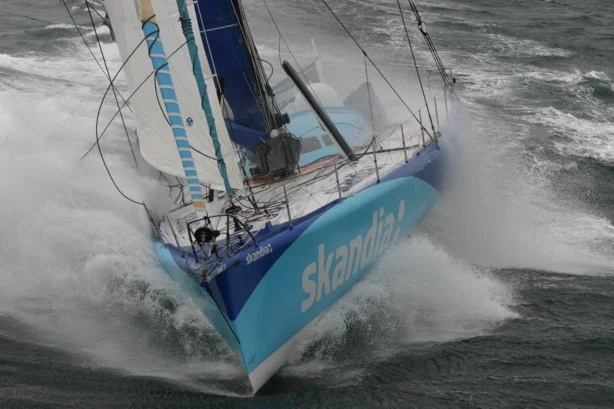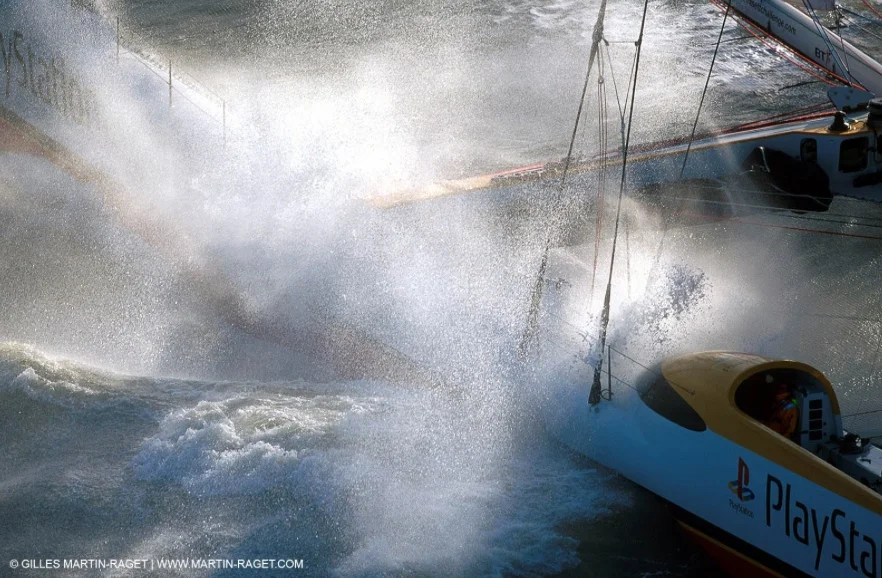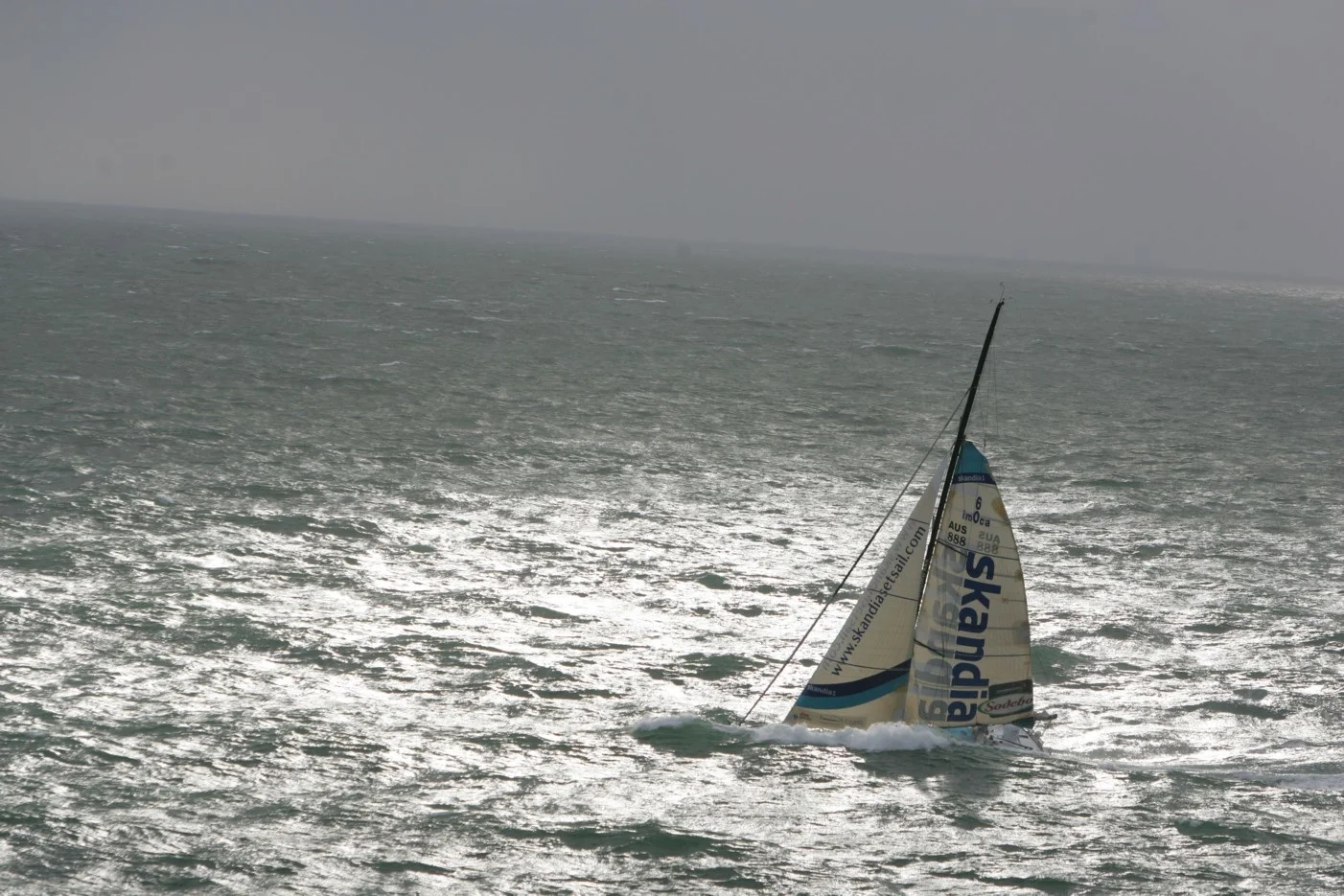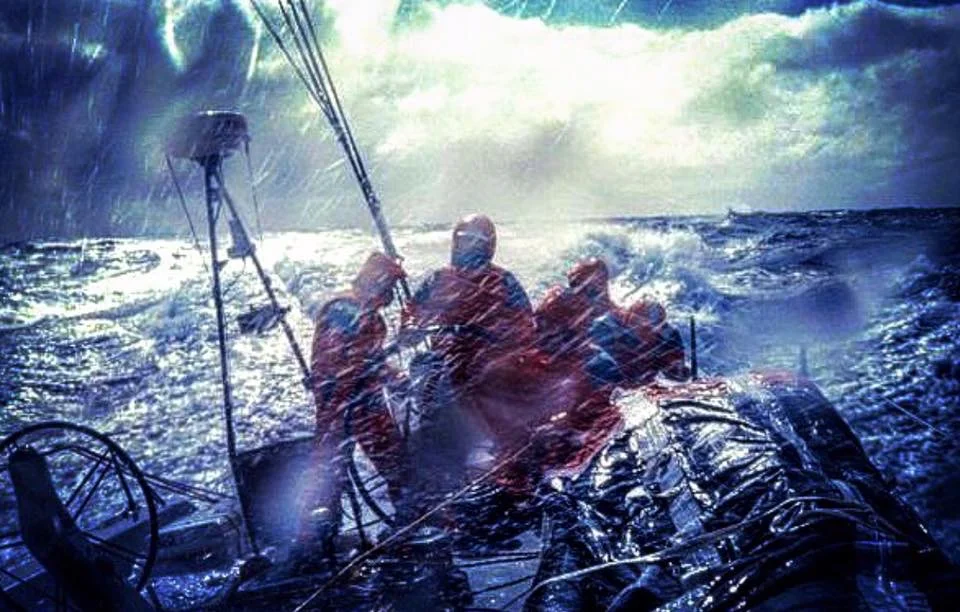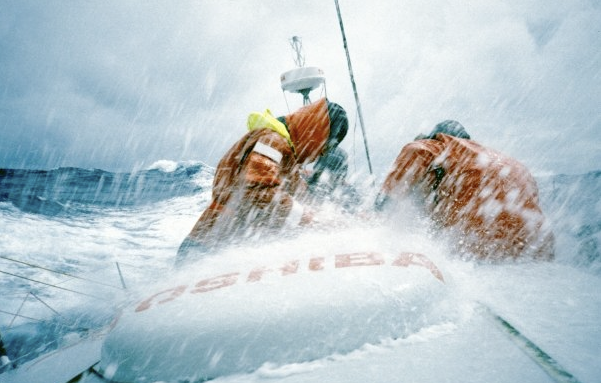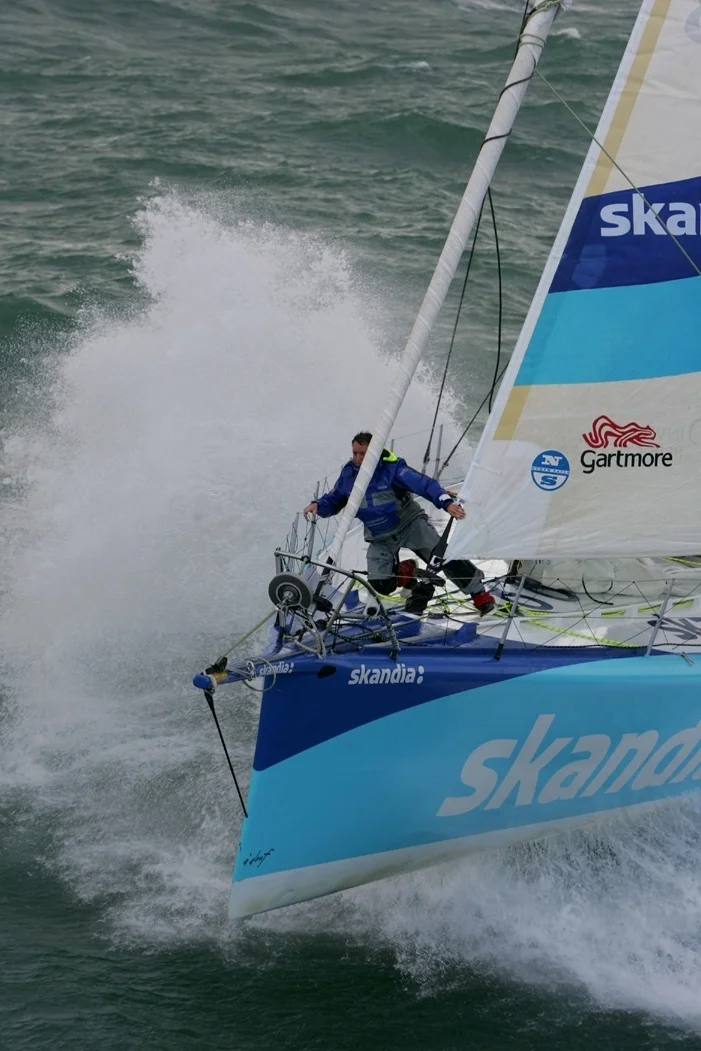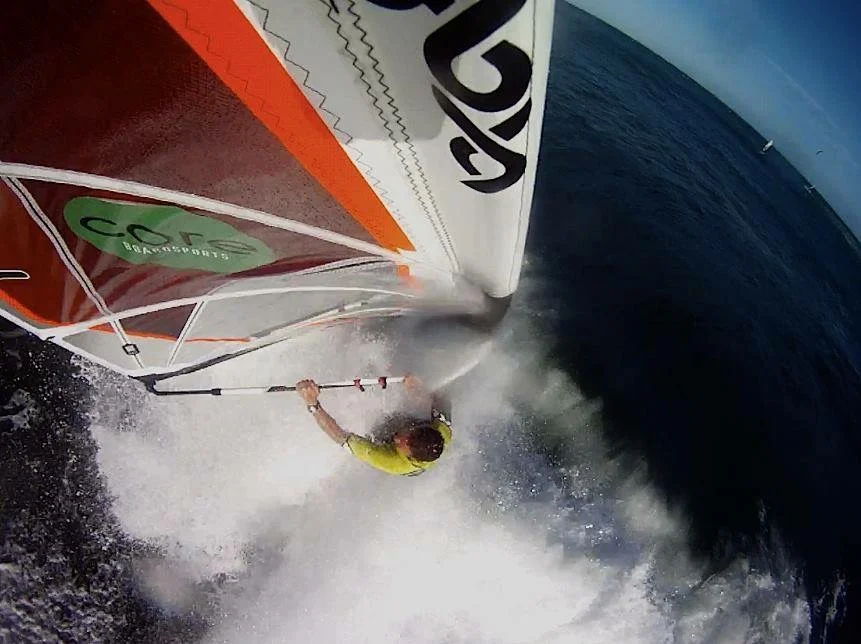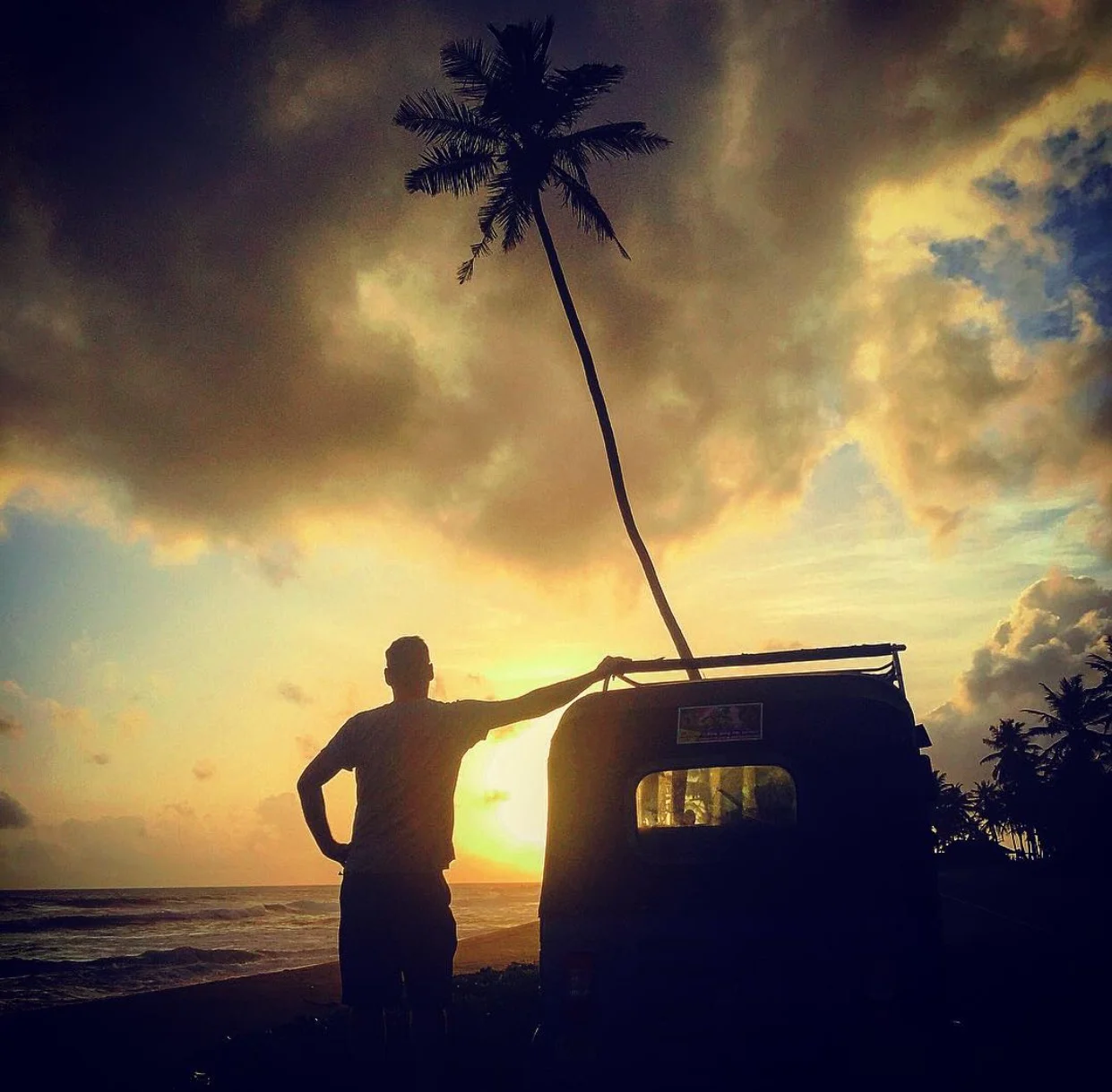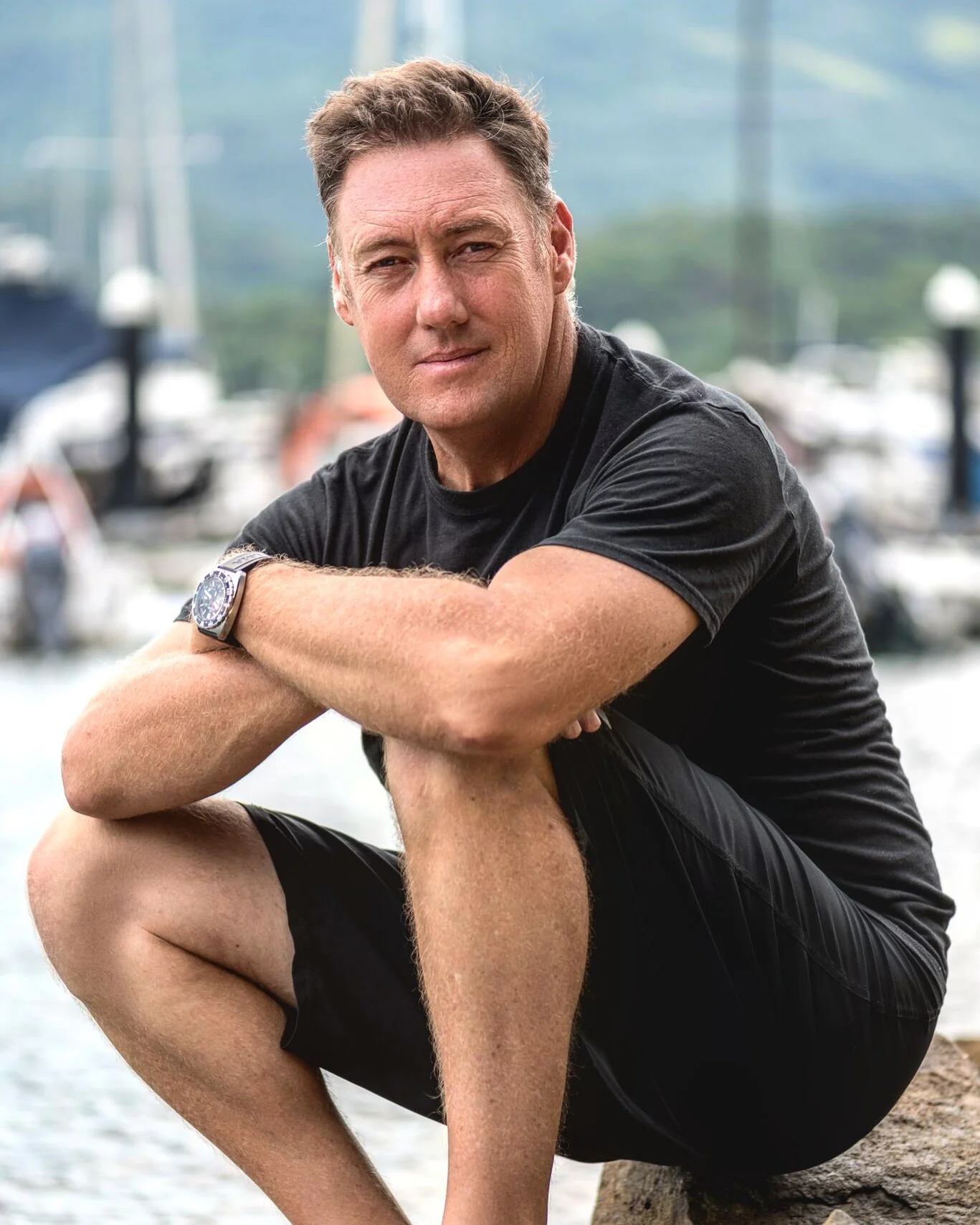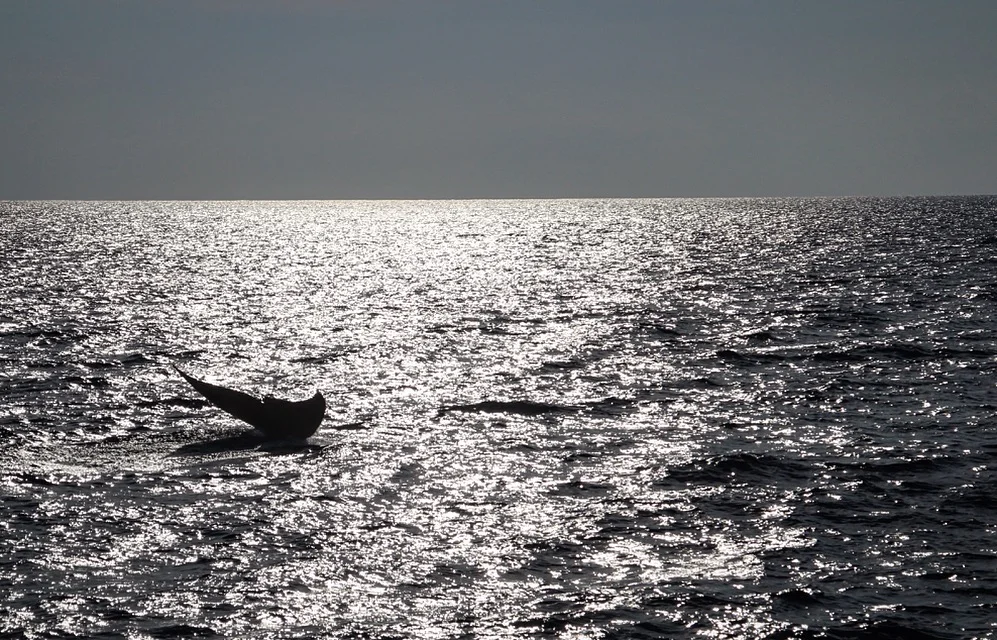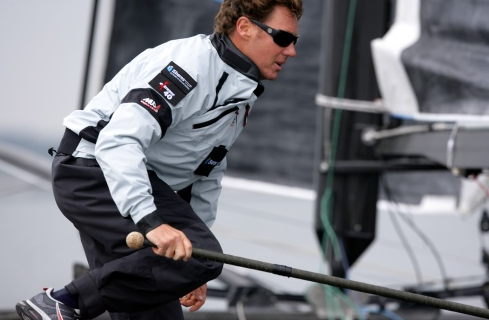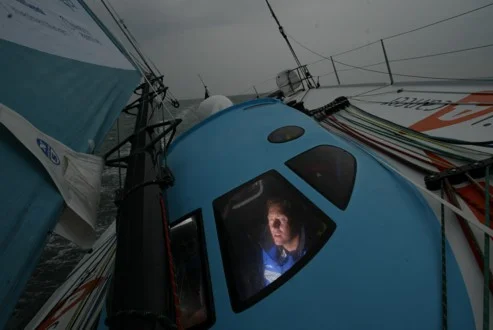Episode 15: Ian Thomson Show Notes
Ocean Sailing Podcast: Hi folks, welcome along to this week’s episode of the Ocean Sailing Podcast. This week we’re down on board with Ian Thomson down at RQ, or Royal Queensland Yacht Squadron at the marina. Ian, welcome along.
Ian Thomson: Thank you.
Ocean Sailing Podcast: This week we’re going to talk about the Around Australia Race, which is planned for I think August next year?
Ian Thomson: Yeah, the 5th of August 2017.
Ocean Sailing Podcast: It’s just something that’s just been released in the last couple of months, really tropical and the race last ran in 1988. So t’s been a long time between drinks. Ian, tell me a little bit about the history of the race and what sort of motivated this idea to run it again after all this years?
Ian Thomson: Funny enough, the initial race was run back in 1988 in the bicentennial year. The name of it back then was the Goodman Fielder Wattie Bicentennial Around Australia Yacht Race, which is a hell of a name for a race. How they promoted that I've got no idea. A friend of mine, Don McIntyre who happened to own Jessica Watson’s boat, also did the Bounty Boat re-enactment. Quite an adventurer. Runs out of Tonga, runs down to the ICE every year. Incredible guy.
He was the one who actually ran it back in 1988 and what a race, at the end of the day, Sir Peter Blake is the only winner of an around Australia Yacht Race. To be able to put your name on a trophy next to Sir Peter Blake would be kind of pretty cool I reckon. My motivation for it has been to sailed around in 2010 solo, it was a dream of mine to do and a lot of people have been inquiring with me as to whether I can run something or whether they should do it themselves.
Actually sailing home recently from overseas, I sailed through Fiji and actually caught up with Don McIntyre. We were talking about his 2018 Golden Globe Race, which is the 50th anniversary of when Sir Robin Knox-Johnston sailed around the world, and he said, “Yeah, I’d love to run an around Australian yacht race but I don’t have the time.” I said to him, “Well it would be really cool if you had someone who has done that track to promote it wouldn’t it?” He’s like, “Yeah, you’d be perfect.”
It’s something I’ve been thinking of for a while and just Don tipped me over the line and said he’d support us 100%. So whilst he can’t do it himself, he’s there in the background helping us and yeah. So putting on a race, probably the motivation behind the race is a little bit different to most other races and the fact that we’re trying to help people achieve their dreams rather than just running a race to make a million dollars. That’s why we can make it affordable for sailors, not charging $25,000 like a prior attempt I tried to do.
Ocean Sailing Podcast: Okay, and so it’s 6,350 nautical miles, it’s the longest coastal race in the world and it’s virtually the equivalent of sailing from Sydney to Los Angeles across the pacific. Kind of puts it into context.
Ian Thomson: Yeah, it’s a long way. The conditions you’re going to face around the country, well, I was fortunate enough when I went around to sail 78% of it, I had the wind behind the beam. It is good weather but once you get to the West Coast, anything can happen and of course you got the southern ocean leg there from Cape Leeuwin and across to the bottom of Tasmania, which, well the Southern Ocean could throw anything at you.
I had everything, I had storms, I had nothing. It’s an awesome track, takes you through the warm, takes you through the cold, I’m sure most people will enjoy the warmth at that time of year but won’t appreciate the Southern Ocean at that time of year. But hey, that’s part of sailing.
Ocean Sailing Podcast: So how did you choose August? Does it help with it climatically to start the race at that time of the year in Sydney?
Ian Thomson: Look, if you are going for an outright record, I would say you would go earlier but you’d be pretty silly to put a fleet through the southern ocean in July. Just for every reason. But also, the winds are getting lighter and lighter now like we’re still copping southeast, well the low’s off the coast here, which is very northerly as we speak. So we don’t need that, to sail up the east coast on northerlies. So hopefully August next year, who knows? The weather could do anything but if we can get a nice high sitting in the middle of Australia, you sail around it.
Ocean Sailing Podcast: That almost times to the day with the start of the Sydney to Southport races, is that just a coincidence or?
Ian Thomson: It’s a week after the Sydney to Southport. It was deliberately done a week after. Sydney to Southport, I’ve been in the yachting industry before and the Sydney boat is always on the same time that that race is on.
Ocean Sailing Podcast: Right.
Ian Thomson: So selling yachts and wanting to race, you can’t do both. We decided to go afterwards, we don’t want to compete against these other races but at the end of the day, we’ll only run every four or five years. So obviously we’re taking people away from Airlie Beach Race Week and Hammo Race Week, which we didn’t really want to do. It would be great if you could run it at Easter, but the weather at Easter is just not good enough to do that.
Ocean Sailing Podcast: Yeah.
Ian Thomson: You have to run it, it’s an event a lot of people want to do and hopefully we can get a good fleet of boats on the line that are happy to do that and I apologise to all the other yacht races if I take people away from them. I hope they don’t see it that way. I hope they see it as just once every four years we’ll get people down. Sydney to Southport, we could bring boats from overseas that could do a Hobart. So it might take away from one but might add to another.
Ocean Sailing Podcast: Yeah, absolutely. The thing is too, like the way I look at it is, if you attract a lot of amateur racers or people that don’t do it for day job, many of their crews can’t do anything anyway. They’re going to have to make choices between what they do in terms of time off. So technically, even if you are at the event at a different time of the year, there will be a whole lot of boats for the crew and say, “Well we can’t do Airlie Beach and Hamo and do this race week and fit in family and work.” So that trade offs going to be there to some degree regardless to timing, I think.
Ian Thomson: Wouldn’t it be lovely if we could all just race yachts for a living? That would be awesome but as you say, if we run it in the middle of the year, we’re going to taker boats away from the winter series that club’s run. So there’s always going to be something you’re going to conflict against, We’re very aware of trying not to conflict against the Volvo Ocean Race because our Ocean Crusaders Campaign is trying to get a leg in there.
So we’d love to head to, straight from finishing this race over to Alicante and run around with the Volvo Ocean Race with Ocean Crusaders pushing our environmental message. We don’t want to clash with the Golden Globe because that’s Don’s pet and that’s something we’re also looking to be involved in, and 2019 is a long way away. 2017 is the goal and I think most boats will make it around anywhere between 30 and 60 days around the country. Obviously with the eight day stopping, unique feature of any sort of race. Yeah, who knows.
Ocean Sailing Podcast: Okay, so at least just to sort of jump sideways into Ocean Crusaders, tell me about that. A read some interesting facts online on what’s out there in the ocean that a lot of us, even sailors, take for granted. Tell us about that.
Ian Thomson: It all started back in 2010. I picked up my ice turtle out of the ocean when I was a skipper up in the Whitsundays and I just got over it. Like picking him up, finding out they die because of plastic and plastic bags in particular. It was just killing me because that’s what we love going and seeing. So I actually sailed around in 2010 to raise awareness of that. Okay, it was a bit of a dream to sail around the country but to do it to raise awareness was a really key thing.
So off the back of that, I ended up launching what is now Ocean Crusaders. Back then it was Save Our Seas Australia. But Ocean Crusaders is morphing into something quite big, into 18,000 schools through our online project. So it’s an awesome thing, but the issue in the ocean is, it’s unheard of. People don’t realise what is actually going on out there. We go to the shops, we pick up our plastic bags, or they’re almost thrown at us. We pick up our milk in plastic containers; we pick up water in plastic bottles.
A lot of it does go to recycling but we’re only talking 38% here in Australia, goes into recycling of PET products. Plastic bags, we don’t have the recycling facilities here to do it. The amount of rubbish out there, they’re talking over 53 trillion pieces of plastic now, all breaking into smaller and smaller pieces and yeah, everyone talks about the north pacific garbage patch but that’s only one of the five jives out there.
You can’t see most of it because it’s so small, it’s in micro plastic sizes these days, the same size as planktons. So 95% of the fish we’re eating have plastic inside them, they’re consuming plastic out there so we’re consuming plastic. Massive issue. The Ocean Crusaders side of things runs along in the background with sailing to 18,000 schools with our own online education program last year, it’s growing again this year. We’re getting a lot of interest from other yacht races like for our environmental campaign because we’re sailors to be involved.
We’re trying to get the message out there, do a little bit, whatever we can but obviously this yacht race, being run by me, is going to have some unique features to it and that includes a set of special environmental regulations, which will ban provisioning your boat with plastic bags. You won’t be able to have single used plastic water bottles on board. So the smallest water container in plastic you’ll be able to use will be a 10 litre.
So you have to refill your bottles as part of the entry fee like each crew member will get a race shirt and a stainless steel water bottle. So they can actually refill those and use them, you don’t end up with all this plastic water bottles in your bags at the end of the race, mostly half drank. No one knows whose is whose. It’s one of those crazy things and we keep doing it. People go on racing and they’ve got plastic forks and they just one use, bang, in the bin.
People have been throwing aluminium cans overboard for years, thinking, “Oh well, it’s aluminium, it will go.” People don’t understand, aluminium cans have a layer of plastic inside them otherwise, all the fizzy drinks, we know coke what it does to your teeth. It would eat though the aluminium can.
Ocean Sailing Podcast: Right, so this is just the assumption that it would just breakdown and disappear. That’s not the case, with the lining?
Ian Thomson: They will eventually but the plastic parts will actually end up in the ocean. It still takes like something like 400 years for that can to actually completely disappear but the plastic won’t. So throwing aluminium cans in the ocean isn’t good. I was speaking to someone the other day saying that they’re happy to throw glass in the ocean because it’s made from sand.
I don’t even know how to respond to that because I mean where is the mentality that says that’s okay? Let’s recycle it; let’s reuse that product so we don’t have to keep pulling sand out of our beaches. We’ve just got to start getting a lot smarter and less lazy I think. So this race hopefully will change the way we go sailing.
Ocean Sailing Podcast: That’s really interesting, you’ve touched on a number of different topics there. How did you reach 18,000 schools? How did that come about? That’s no mean feat when you think about — even if you think about a thousand kids in a school, I mean you’re talking about what? 18 million young people? That’s a big reach.
Ian Thomson: In the five years since we’ve had the online education program going, it’s been stunning the growth. It sort of triples every year. We started off visiting school after I went around Australia and then I realised I couldn’t visit a lot of schools because you visit one school a day. Of course it costs money and we weren’t getting funding in.
Ocean Sailing Podcast: Yeah.
Ian Thomson: So we put the program online. 13 lessons here in Australia, ranging in topics from overall general plastics is the introduction and then there’s one on plastic water bottles, there’s one on turtles, seals, whales, dolphins, sharks, albatross. There’s all this different lessons. Then we do email marketing out there, as the money comes in, which is very little.
The big growth came when Shawn Manchester, one of the guys from America. He sailed in The Clipper Round the World Yacht Race. He only did one leg, which was Florida from San Francisco, which was 5,100 nautical miles. He raised a dollar for every mile he did for Ocean Crusaders. That $5,000 ended up being put back in to an email marketing campaign in America. We grew like over 10,000 schools in America in a year just from one email marketing campaign.
Ocean Sailing Podcast: Then you get to that tipping point where so many people start to know about it and they start to tell others and it starts to take on a life of its’ own.
Ian Thomson: It’s interesting because unfortunately, I’m not that computer savvy of how to get statistics back and Don picked this up that we’ve got 18,000 schools who have downloaded the program last year. That doesn’t take into account the people who have already downloaded it in the past.
Ocean Sailing Podcast: Yeah, right.
Ian Thomson: Who could still be using the same program, because you download it on to your computer and you can use it time and time again.
Ocean Sailing Podcast: You can just use it over and over.
Ian Thomson: That’s 18,000 new schools last year.
Ocean Sailing Podcast: Yeah, right.
Ian Thomson: It’s not 18,000 schools. So we could be somewhere a lot higher than that, and I don’t know how to work out how to work out who is using it every year. So we’re working on how we can do that. Whether it’s kids signing a contract committing to no plastic bags for the year and they sign it each year, and after three years they get a T-shirt from Ocean Crusaders, don’t know.
Ocean Sailing Podcast: Yeah, some good things you can potentially do there with that information and then probably start to help you gather more support to help spread the word wider once you understand the reach because it potentially, like you say, it could be quite large without really even knowing.
Ian Thomson: Yeah, one of the things we struggle with is funding for Ocean Crusaders being not for profit organisation. Recently we’ve been looking at trying to get funding but because we’ve got now quantity of measures of our impact, we struggle to get funding. Yet the people who are cleaning up beaches and pulling tons and tons of rubbish off the beaches are getting hundreds, if not millions of dollars from our government, which makes no sense at all.
Ocean Sailing Podcast: It’s like working on the bottom of the cliff, right? After it’s already turned to custard and cleaning up the problem rather than preventing it.
Ian Thomson: We teach the kids prevention is better than a cure. We all learned that at school, and yet the government’s funding the cure, which is “clean it up”.
Ocean Sailing Podcast: Because it’s visible, yeah.
Ian Thomson: Which makes no sense and we can’t get funding to go and keep campaigning. As I say, $5,000 US dollars we get over 10,000 new schools.
Ocean Sailing Podcast: Yeah.
Ian Thomson: Bang like that. But then it does snowball.
Ocean Sailing Podcast: And like you say, if you look at supermarket shelves now, there’s bays allocated to 24 packs of water bottles and the irony is we live in a country where water’s on tap for 99% of the population. There’s country’s where they just happily have clean water, yet we’ve got to go now buy it in water bottles instead of taking it out of our taps and I read recently that RQ, Royal Queensland Yacht Squadron, are looking to change their sailing rules to prohibit use of disposable plastic bottles on boats when you’re racing. Is that something you’ve had a hand to play?
Ian Thomson: To be honest, no. We helped promote the fact that they’ve made the decision but they’ve actually made it off their own back when we go back from our trip overseas. We came to RQ and we know quite a few people here and they said, “Oh you know they’re going plastic bottle free here at RQ,” and I’m like, “Well that’s awesome, let’s promote it because no one knows about it.” They’re following the royal Hong Kong Yacht Club who did it. They’ve been over there and seen one of this massive yacht clubs, which is now a host to the Volvo Ocean Race. They’re doing it so RQ are going, “Well maybe we should too?”
It’s a huge thing if we can get that done like we’ve just got to find a way for them to do it where we can cater. We’ve just had the junior sail week here and there’s a lot of kids off the beach, so you’ve just got to make sure that we can provide for those kids so we don’t have thirsty sailors. A lot of the senior sailors, that’s all right, they usually drink beer anyway rather than water. But at the end of the day, we just got to make sure we could set it up so that it works.
Ocean Sailing Podcast: Theoretically though, 50 years ago when kids sailed before the days of disposable water bottles, or throw away wear bottles, they drank water somehow didn’t they?
Ian Thomson: Yeah, we all used to do it. We also used to be able to get our groceries home without plastic bags. They were called the boxes that everything goes into the shopping. You pick them up at the door.
Ocean Sailing Podcast: Well that’s a good point. Theoretically, the same number of boxes that takes food into the supermarket, the same number of boxes you need to take them out again right? In theory.
Ian Thomson: Well, they just crush them.
Ocean Sailing Podcast: Yeah, they just go to waste, put them to the bows, but you look at what Dan Murphy does, not necessarily a good cause but you get your box back of the check out, and you pack your wine in and away you go. They don’t need to give you plastic bags.
Ian Thomson: That’s just logical; we’ve just got lazy. Unfortunately the supermarkets, it’s a cost thing because…
Ocean Sailing Podcast: Yeah, it’s a productivity issue too, right?
Ian Thomson: Their biggest cost is to checkout person. Getting someone through the check out as quick as possible and unfortunately at the moment, plastic bags, all one size that they can just pull out on those little stands, fill up, that’s quicker than us taking our own bags.
Ocean Sailing Podcast: What you’re starting to see overseas is cities that are starting to ban plastic and force the change from bylaw level to say, “Within five years you won’t have plastic bags and plastic bottles and what have you.” So some of those things aren’t going to come out of self-motivated commercial agendas are they? If push comes to shove, a bit like all the other stuff for the carbon trading and emissions and sometimes it does take a bit of brute force from government to start to force the change.
Ian Thomson: We wrote a letter a long time ago to the government saying, “why don’t you ban plastic bags?” And they said, “It cost too much.” We spend millions every year on banning like cleaning up the problem but they say it’s too much to ban. Well how much does it cost to make legislation? It’s a bit of words on a few pieces of paper and get a few people to tick it and that’s it.
Ocean Sailing Podcast: Yeah, it’s too hard to risk all those votes for those lazy people who wouldn’t want to change in a short term from plastic bags usage.
Ian Thomson: No, I don’t think it’s that. I think it’s how much will it cost their government because most of their campaigns are funded by the oil companies that made plastic.
Ocean Sailing Podcast: Right. Yeah, right.
Ian Thomson: So it’s not about the people. We deal with whatever we give them, whatever government you get soon, if we get one, we have to deal with whatever they put in place. You learn to live with it, you have to. Otherwise what are you going to do? Complaining when no one listens really.
Ocean Sailing Podcast: Yeah, well that’s right. I never use plastic water bottles when I was racing and maybe 18 months ago we started buying them and now half our rubbish bags are plastic bottles. We were planning some multi-day stuff recently and one of our crew said, “We’ve got this water tanks, why do we fill up the bag with disposable bottles? Why don’t we just take water bottles. If you don’t like the taste of water in the water tanks, which is tap water, just put a carbon filter on your sink tap and it will taste great.”
Ian Thomson: 19 bucks from Bunnings.
Ocean Sailing Podcast: Hundreds years ago if you said, “You can have a boat with water tanks, and just fill up your bottle whenever you want,” people would have gone, “Wow.” Now we go back to taking bottled water along that we can fill up our rubbish bags with.
Ian Thomson: Still countries out there who would sit there and come on a boat like your boat, like my boat and just go, “Wow, you’ve got a sink, you’ve got a stove, you’ve got running water, you’ve got hot water.”
Ocean Sailing Podcast: Yeah.
Ian Thomson: I mean there’s people that live in villages like they don’t have that.
Ocean Sailing Podcast: You’ve got a cutlery drawer. Why would you throw disposable plastic cutlery when you can just use what’s in your drawer?
Ian Thomson: Exactly. We’re a wasteful society and it’s because we’re lazy. We’ve just go to get over it.
Ocean Sailing Podcast: Okay, so you’re currently the solo around Australia monohull record holder. How did that eventually come about? That’s no mean feat to do it solo given, unlike crossing the ocean, you spend a lot of the time close to the coast, close to other recreational commercial traffic and there’s lots of hard stuff to run into if you got the wrong way at the wrong time.
Ian Thomson: Yes, there’s lots of hard stuff to run into. I didn’t hit anything, thank god. Electronics is the only way you can do things solo these days. I was lucky that I had Furuno sponsor it. The Furuno radar overlaying onto the plot with all the alarms. If rainclouds came close they’d come up on the radar, set off an alarm, I’d wake up but the longest sleep I had in 42 days was 26 minutes.
Ocean Sailing Podcast: Wow.
Ian Thomson: The average sleep was usually 20 minutes, I’d sleep for 20 minutes, get up, check everything, get up. I might go straight back to sleep for another 20 minutes. But it’s pretty furlong running two hand it would be a hell of a lot easier and a hell of a lot faster because you can run spinnakers all night because someone’s on deck watching the whole time.
I didn’t. I’d slow down like at night time to make it safe. If there were rain in the area, I wouldn’t have a spinnaker up. It’s was full on to sail solo and these guys who sail around the world on these [inaudible] 60’s with foils.
Ocean Sailing Podcast: That’s unreal.
Ian Thomson: Insanity is probably the word. I realised when I got back that 42 days by yourself is not a good thing in life. It’s sort of people, we’re meant to be with other people. Yeah, pretty full on achievement but doing that is nothing compared to what our oceans are facing and that was the message of why I did it. The oceans are facing a much bigger battle in 42 days. It’s going to take a lot longer than 42 days to clean up our oceans.
Ocean Sailing Podcast: Well because the problem’s not standing still, right? With population growth and then with some of the countries that just literally bulldoze their waste into the ocean, along there where you stop contributing to the problem.
Ian Thomson: When we’re consider that China’s producing 27% of the plastic that’s in the ocean, China’s a big hit and I remember talking to the guys over at Volvo Ocean Race and they said to us, they went to China obviously in the last edition and they said, “Okay, we want to do a beach clean.” And they’re like, “No, we don’t need to clean beaches because our beaches are clean.” The Chinese government is just not admitting they’ve got a problem.
Volvo said, “Well okay, no, we want to come and if there’s no rubbish to pick up, that’s awesome, we can promote that, fantastic.” So eventually they agreed that they would be able to do this clean up. 6 o’clock in the morning, the Chinese army went down and cleaned the beach that the Volvo team were going to go and pick up the rubbish off. So by 8 o’clock, when they got there, there was no rubbish on the beach because the army had already picked it all up. So it kind of gives you an idea of China doesn’t want the reputation of creating all this plastic, but they are, and until you admit you’ve got a problem, you’re not going to fix it.
Ocean Sailing Podcast: Yeah, I mean we’re pretty critical of North Korea but that’s a little bit in denial there isn’t there? In terms of that example.
Ian Thomson: A little bit of an understatement, yeah.
Ocean Sailing Podcast: Keeping up a public façade that’s quite transparent, well not transparent but you can see straight through it.
Ian Thomson: Yeah, absolutely. That’s what we’re fighting; companies and when governments that are doing that. Our own government says it’s too expensive, it we’ll spend millions of dollars cleaning up the problem.
Ocean Sailing Podcast: Yes.
Ian Thomson: It’s just, “Let’s get to the source of the problem,” and that is just making a few decisions, making a few changes, getting rid of lazy people. Let’s do something. It can be done. San Francisco’s just banned Styrofoam, there are no more Styrofoam cups, there’s no more Styrofoam burger boxes or anything like that. What a fantastic initiative. Why can’t other governments do that? If it’s so expensive for us to ban plastic bags, how does South Australia and Northern Territory in Tasmania do it?
Ocean Sailing Podcast: Well exactly. You give people choices and they’ll either recycle or they’ll pay extra for not recycling by buying paper alternatives or other alternatives.
Ian Thomson: You change. You have to change.
Ocean Sailing Podcast: They take quite a lazy option and people don’t have the option anymore.
Ian Thomson: If you have to change, you will.
Ocean Sailing Podcast: Yeah, that’s right. Okay, so your last trip around the country, I mean doing it solo is pretty significant. Like you say, even having a second crew member is probably like having five more crew members in terms of the perceived difference it can make. What were the key lessons you took out of the preparation that you did that made that possible?
Ian Thomson: Pretty much like making sure you’ve got all your electronics running properly. I mean my trip was meant to be nonstop, unassisted. It didn’t end up there because coming across Bass Strait, I had a fan belt broke. I put the spare one on. Must have been petrified because it last less than 24 hours. I didn’t have a third one. So I ended up having to pull into Sydney.
Pulling in to Sydney meant that I was no longer a nonstop, unassisted but I was going to captain cook it up the coast. I literally was. I actually have the ability to do that and because you’re coastal, you can get your line of site and I had the charts, I had the handheld GPS, so it wasn’t quite Captain Cooking it but I would have done all right.
Problem was when I was not sleeping and I couldn’t have my radar and my alarms set anymore, literally at one stage, I woke up, came outside, made sure there’s nothing around and there was a super tanker 50 meters beside me. That scared the living bejesus out of me and that was it. As a commercial skipper, I couldn’t go running into a ship, putting other people’s lives at risk, so you just couldn’t do it. I had to stop. Records are one thing but safety of life is the biggest thing to anyone. I wouldn’t be able to live with myself if I hit some other boat and near killed someone or anything like that.
Ocean Sailing Podcast: It’s not great for your family either to leave…
Ian Thomson: It was interesting because I probably got more credit from people in the sailing industry for actually stopping and making that decision for safety than if I had pushed on and actually got the record. In this race coming up, safety is always going to be a paramount thing and one of the cool things with the pit stop version of the race where you can take your eight days wherever you like…
Ocean Sailing Podcast: I love that part.
Ian Thomson: …is that if you have a problem, you can go in and get it fixed.
Ocean Sailing Podcast: Yeah, it’s like having money in the bank, isn’t it? You just got to choose when and how you spend it or whether you save it till the end of it and enjoy it all at once.
Ian Thomson: Massive technical decision for weather but it does give you a get out of jail clause if you tear your mainsail in half. Like in the last Hobart, how many boats pulled up because of torn mainsails? Well this option is, you sail into the nearest port, you get it fixed and off you go again.
Ocean Sailing Podcast: Yeah.
Ian Thomson: To me, that was a really cool feature. It was actually Don McIntyre’s idea of how to run it, learning from his original race. So yeah, I like that. Eight days, I don’t even know how Don came up with eight days, and I don’t know why I didn’t change it. It was just, “Well that sounds good. Happy days, eight days.”
Ocean Sailing Podcast: Yeah, that was probably kind of a day a week kind of thing almost isn’t it?
Ian Thomson: Yeah, what did it take me? Six weeks to get around? Six weeks to get around. So yeah, it is sort of a day a week.
Ocean Sailing Podcast: Yeah, well when I saw it, the thing that instantly struck me was, “Wow, this is actually doable whether volunteer crew who have day jobs and lives because they can join you for one leg or two legs or three legs because depending on how you use those days, you might say, “We’ve got four 12 day legs,” and anyone potentially can join you for 12 days but they couldn’t do the whole race.
So the ability for a crew to swap out at certain change over points and you’d have some reserve days for things that come up that break or need attention. It just gives you a whole lot of flexibility that you wouldn’t have if you had to say find people who want to do a 45/50 day race and take two months out of their lives.
Ian Thomson: Absolutely. And I mean we had a fine call and I hope this comes off because it will be awesome for the race and awesome for the program but Dave Pescud from Sailors With Disabilities currently owns the nonstop fully crewed record around Australia for a monohull with the Sailors With Disability Program. He’s been in touch and he loves the whole stopping concept because it means they can go in to port, they can get promotion at that port, they can swap crew over, get sailors with disabilities from that region to sail the next leg.
So if they come on board, fingers crossed that their committee allows it and we can find some funding for them even, like if you’re out there listening, awesome program. It changes people’s lives. If they had the funding to do this race, imagine what that would do for those people. “I was in the race. I’ve raced around Australia.” Huge thing for someone who is able bodied, let alone disabled.
Ocean Sailing Podcast: There will be some stats somewhere that says there’s more to the moon already than to have sailed around Australia. So it’s no mean feat when you think about some of the adversity that you face with some of the weather and some of the legs, especially down south.
Ian Thomson: Absolutely, one of the ambassadors of the Ocean Crusaders Program and I’m still yet to get in touch with him, Jamie Dunross. In 2010 when I was sailing around Australia, Jamie was too. Jamie was doing it on a little S&S 34, same thing that Jessica Watson went around.
Ocean Sailing Podcast: Popular model.
Ian Thomson: His was yellow, not pink like Jessica’s and he was doing it with stops, which you sit there and go, “Okay, well you know a guy sailing around the country, stopping by himself, no problems,” then you hear the guy’s story. He’s a C5 quadriplegic. It takes him 40 minutes to get to the bow and back on a 34 foot yacht. The guy has so little movement in his arms and legs that the whole interior of his boat was actually padded because he can’t hang on if the boat rolls.
He can’t come in to a port and tie up without someone to help him because he can’t be on the tiller and just quickly run up to the bow and then 40 minutes later your boat will be in the next marina. So what a legend. He sailed around and if you actually took out the days of his stops, he’s the second fastest person to sail around the country.
Ocean Sailing Podcast: Wow, that’s no mean feat.
Ian Thomson: For a C5 quadriplegic. He’s an absolute dead set legend and inspiration for anyone who is thinking of doing this race. He did it as a C5 quadriplegic with stops. Anyone can do this.
Ocean Sailing Podcast: And most of us grumble because it takes us 20 minutes to get away with the gear on and off and we don’t have to worry about lifting up the stairs into the cockpit in a hurry. I mean that’s a huge barrier for somebody that has to deal with a race like that.
Ian Thomson: Just to set his boat up with systems to get him up and down a companion way. We just walk up and down the companionway. He has to have a full system to lift him up there.
Ocean Sailing Podcast: Yeah.
Ian Thomson: He even had a system set up to go up the mast.
Ocean Sailing Podcast: Wow, that’s amazing to just have the guts to do something like that with a limited movement. I’m not the best with heights on a good day let alone the fact that you’re completely reliant on technology to get you there and nobody to naturally grab on in a hurry, that’s incredible.
Ian Thomson: You talk of inspirations in your life to do things and for me, running this race is about allowing people to achieve their dreams and so many people want to do it. You’re our third entry but the two first entries, both of those boats had actually been custom built for this race. The first one was built for the 88th bicentennial race. That’s the 50 foot cat Top Gun. That was built back in ’87 to go on the first race, it didn’t make it because of funding issues.
It was then bought by somebody else to do the race, that didn’t happen in 2014 and now we got the new owner who is hopefully third time lucky, we’ll actually get it around the country. Then the other boat is Tam Faragher’s 50 foot Kerumba. Absolutely stunning boat. Beautiful boat, built it to do what was meant to be the 2014 race. Obviously never went ahead and so now he was our first entrant because as soon as he heard about it, he was like, “Yup, okay, we’re in.” No hesitation, it’s just what his boat was built for, it’s a dream for those people. Coramba, I don’t know how much it cost but it’s not a cheap boat.
Ocean Sailing Podcast: It’s a beautiful boat.
Ian Thomson: Absolutely stunning boat. For him to have built a boat for this event and not be able to do it, that would have hurt. Now he’s got an opportunity to do it. We’ve got three boats now; we’ve got a race.
Ocean Sailing Podcast: Wow, because I entered last night.
Ian Thomson: You entered last night and I love the fact that your boat’s not a full blown race boat, the other two, well okay the catamaran is a full blown race boat. Kerrumba’s a race boat on the outside but really nice downstairs and you’ve got the more cruisey version of a boat. It shows, it doesn’t matter what boat you’ve got.
We’ve had interest from a guy who owns an old Herreshoff, 70 year old boat and it’s the smallest boat to have competed in the Sydney to Hobart, he raced five times in the 50’s and he’s looking at going around on that.
Ocean Sailing Podcast: Isn’t that cold to get some of those iconic type boats back for something like this. That really creates a special race.
Ian Thomson: Well something I’m really focused on, because I really hate the Hobart every year because it’s all about the maxis.
Ocean Sailing Podcast: That’s right. The television viewers who don’t sail would think that there are only five boats in the race or that all the boats in the race are hundred footers because that’s the coverage, right?
Ian Thomson: They’re all multimillionaires and it doesn’t matter, all their crew get $20,000 to go to Hobart. But you get Maluka of Kermandie who is Sean Langman’s boat that’s so small and timber and takes nearly till New Years to get to Hobart. Some say it’s kind of like golf, they’re out there longer so they get more enjoyment. I don’t know about that because going to Hobart’s, the wrong way.
Ocean Sailing Podcast: Depending on the weather that you’re enjoying.
Ian Thomson: But at the end of the day, we’re dead set certain we will promote every single boat in this race. Everyone will have sponsors. If they’re sailing for a cause, we’ll be right behind them 100%. Every boat will get coverage. If we get TV for the start, we’ll actually run separate starts if we have to, to ensure that every boat gets covered. If those start focusing on the big maxi boats, they’ll have me in their ear very quickly saying, “Get off them. It’s not about them, it’s about everybody living a dream.”
Ocean Sailing Podcast: Well it’s really struck me as a horses for causes type of an event because you’re going to attract shorthanded crews that want to go nonstop on monos or multis but also all of those crews that are out there that can make it work because of the eight day ability to stop for eight days throughout the course of the race to change crews, repair damage, replenish provisions. I think that makes it work and I think that when I thought about like last night, I thought, “What is it about this that’s kind of the magic ingredient?”
I think there’s this whole bunch of sailors who sail up and down the coast and never want to get out of sight of the land and they look at the around the world sailors and say, “Wow, that would be cool to do some day but I’ll never do it because of time, cost, money, logistics. I can’t take 10 months out of my life or what have you.” You look at this race, you’re within a stone’s throw of the coast, even though it’s probably out of sight sometimes. It’s a long race but even the cost of getting crew from one side of the country to the other that get on and get off is not that significant. Versus getting them to the other side of the world.
It’s really got all the ingredients of a great ocean race with all sorts of challenges and different legs and different stops and different dimensions but it’s actually within reach of a lot of people I think from an affordability but more importantly, time. You can take a couple of months out of your life to do something like this but most of us couldn’t take nine or 12 months or 18 months as it turns into when you’re preparing for something big and all the preparation that goes in.
It kind of struck me as this sort of big enough to be challenging and you wouldn’t want to do it every year but it’s one of those things that if you did it once in your life or twice in your life, it’s a pretty amazing way to see the country as well.
Ian Thomson: Yeah, we’re trying to open it up to as many people as we can obviously for safety side of things, we had to put an age barrier on it but we did actually drop that down to 16. There’s a lot of 16 year old kids who are damn good sailors. Jessica went around the world when she was 16. So people can sail at that age. If you’ve got a 16 year old kid who wants to sail around the country with you, what a great thing to do when you’re 16.
We took the size restrictions off that most races have these days. I’m talking about top end and bottom end. Because you got the mini transat boats. Mini Transat boat, six and a half can’t do a Hobart. But they can cross the Atlantic?
Ocean Sailing Podcast: Yeah, that’s an odd one isn’t it? That anomaly.
Ian Thomson: We’ve had an inquiry from a couple already that love the stops thing because on a six and a half meter boat, being able to stop and re-provision is probably a good thing.
Ocean Sailing Podcast: Well you can’t take it all with you upfront, can you? Not easily without having a severe weight issue with handicap wise.
Ian Thomson: Well, you can and obviously they do it across the Atlantic. But when you’re eating out of a packet all of the time, it might be nice to stop and have a good steak meal. Even a few cold beers or anything cold for that matter because they don’t have fridges on those boats but yeah, just being able to open it up to smaller boats. Obviously the big boats, there are outright records held by 110 foot trimaran.
Imagine if Spindrift 2 wants to come down here, 135 footer, 130 foot maxi trimaran and do it, fantastic. But the other thing, the shorthanded version, we have the Melbourne to Osaka that starts in March 2018. To come out here to Australia, do the around of Australia, hang around, do the Hobart with a few extra crew, then go back to Melbourne, do the race week in Melbourne, Victoria Sailing Week or whatever they call it these days. Then line up and go back to Japan, you’re back in the Northern Hemisphere. Hopefully we can drag a few international entrants on that basis.
Ocean Sailing Podcast: Yeah, it’s nice if the timing feeds into other things, makes it all work.
Ian Thomson: So you would have that if you did it in 2018 that would be the wrong time of the year.
Ocean Sailing Podcast: Okay, what’s your vision and do you see this as the start of something new that then starts to run every four years or some sort of frequency and starts to take on a life of its own and gather them into them?
Ian Thomson: Absolutely, we would love it to become a permanent race and grow into one of the legendary races that you want to do in your life. Round Island Yacht Race, just had 300 entries or something. I don’t think we’ll ever get that many but you dream.
Ocean Sailing Podcast: Who knows right? You could start somewhere.
Ian Thomson: So timing wise, how many years between? I don’t know to be honest. We’ll talk to the sailors who enter this event afterwards and say, “What do you think?” We’re listening to the sailors in this event. We just want to listen to what their thoughts are. If they like something, great. If they don’t, we’ll change them.
Ocean Sailing Podcast: Yeah, I saw some interesting commentary, I think you might have said, the people have already raised questions about the fuel restrictions and part of the environmental approach is whatever fuel you leave, is what you’re going to take around the country and if you think on one hand about solar and wind generators and the hydro ones you can go through the water, then from a self-sufficiency point of view, the options are there. I think you got around with about 180 litres I think when you went around. What’s the push back been? I didn’t see that it’s unreasonable when I read that as part of the conditions.
Ian Thomson: I think some people are looking at what they’ve used in other races and haven’t even thought about the alternatives because they’ve all spoken to me before that article was put out about the environmental side of things. Which we just wanted to hold back a little bit as to why we put them in there.
It’s like the plastic bag thing, really? “Why do you want to get rid of plastic bags?” “Because we don’t need them.” “Why do you want to restrict fuel?” We don’t need it. We don’t need fossil fuels. Teslas can drive around the country like on a battery.
Ocean Sailing Podcast: Yeah, that’s right.
Ian Thomson: We’ve got solar and by jeez, Australia, sailing around the country, you’re not going to see too many cloudy days apart from the southern ocean.
Ocean Sailing Podcast: Plus we’re sailing right? We’re not murdering. That’s the primary goal.
Ian Thomson: That’s the other thing, we’ve sailed back from Croatia to Australia with solar and wind and we could sail, like when we’re sailing, if the wind was 15 knots, with the wind generator and the sun during the day, we didn’t need anything. At night time we might have to throw the engine on for a couple of hours which is two litres of fuel a day. That’s not a lot.
The hydro generators are improving and the cost are coming down. Just spoken to a company and it’s likely we will have them on board with a discount.
Ocean Sailing Podcast: Also when you’re sailing, it’s kind of annoying putting the engine on if you don’t have to. Even just the sound interruption, let alone the fact you're wasting fuel in running the engine, which doesn’t really like just idling.
Ian Thomson: I’ve always talked about the R factor of sailing of when you turn that engine off and you hear that silence and all of a sudden it’s like like, “sigh”, yeah. The hydro generators that are coming out these days, they’re getting better and better. We’ve got a company, Watt and Sea that are likely to come on board and offer a discount to our entrants on their systems. Now, someone said to me, “Well that costs a fortune, they’re like $12 grand.” They’re down to under $6 grand these days. I think its $5,200 for the new Watt and Sea hydro generator. It’s 300 watt so…
Ocean Sailing Podcast: Wow, that’s pretty substantial. I’ve just put three solar panels on there and they’re 1.2 meters by 800 millimetres and they’re 400 in total for the three panels. So 300 is quite substantial form an output point of view.
Ian Thomson: Yeah they’re 300 watt and that’s sort of speed at 10 knots. They power up in anything above three knots. So I mean at the end of the day, that’s $5,200 I think. I’m hoping that we’ve got some sizeable discount coming from them as part of the deal we’re trying to work with them.
Ocean Sailing Podcast: Yeah.
Ian Thomson: It’s a sponsorship of sort. We’re not looking to get money from them, we want to offer discounts to our entrants and that’s the sponsorship that hopefully they’ll put forward. So fingers crossed for that but they look awesome. They’re just a one meter fin that hangs off the boat, that’s very little drag on them and huge power. So I think you’ll actually find this system, not in the 17, 18 Volvo Ocean Race. But they have a vision of going fossil fuel free in the Volvo Ocean Race. I think you will actually find those things will power the next generation of boats because they want to design boats. So if they’ve all go them, they’ve all got them.
Ocean Sailing Podcast: Yeah, well instead of having to run those dedicated generators daily to top their batteries that would be a great step forward.
Ian Thomson: It’s where we’re going, we’ve got hybrid engines in boats in the past, we’re getting hybrid cars. Germany is looking at banning fossil fuel cars after 2030. So if cars aren’t in them, why are we using them in sailboats?
Ocean Sailing Podcast: Life’s easier. I mean if you don’t have to plug in the shore power on your engine, I’ve just put solar on because down the Gold Coast, quite often it’s not enough wind for the wind generator to be effective and if you’re in anchorage for a few days, just running your engine for the sake of it, there’s no enjoyment there and here’s a trailer for it, you’ve still got a fuel cost and you’ve got an engine wear and tear cost, it’s not that running your engine’s free. So when you’re thinking about the value over time of other forms of power generation, you’ve got to look at the cost of your engine use and maintenance and fuel over time, it’s not a free resource.
Ian Thomson: Well in the last Vendée Globe, there was a boat that actually was going fossil fuel free. Didn’t get a lot of publicity because it wasn’t one of the quicker boats but his deck was covered in those flexible solar panels. So even on a race boat you can do this. Because how much deck space on a race boat do you never walk on? So just looking at those alternatives, you don’t have to have the big bulky solar panels. The technology is there, we just got to think about it.
Ocean Sailing Podcast: To be motivated to think differently, be creative. Okay, with the race, so how many entries do you expect or what do you think the range will be? Do you have any kind of guesstimate in your wildest dreams as to what it could be on the start line when it comes to August next year?
Ian Thomson: Wildest dreams? People keep asking me this question and I have no answer to it. We’ve got three boats now, we’ve got a race. If we end up with 10 boats, awesome. If we end up with 20 boats, awesome. It’s not about how big it is to me, it’s about making sure that if we got three boats, that those three boats achieve their dream. If we got hundred boats, we’ve got to cover a hundred boats and we’ve got a hundred boats achieving their dreams. That’s more important to me than numbers. Obviously if we end up with a hundred boats, god, it would blow my mind for starters. Like a hundred boats…
Ocean Sailing Podcast: There’s a few logistical issues coming out of that.
Ian Thomson: We might need a few more crew to run the race. But that’s all right. I don’t have a wild expectation. I don’t have a number that I dream of, I just want people to achieve their dreams and come on out and if they’ve got questions, give me a call. I’ll talk to anybody. Drop me an email, I’ll respond to every email. I’ll help people try and get to that start line. That’s what it’s about for me.
Ocean Sailing Podcast: That’s great Ian. I mean there’s this little old race called the Solo Tasman Race, which runs every four years, and most people have never heard of it. 10, 15, 20 odd boats turn up every four years, and leave from New Plymouth and sail to Mooloolaba. So for people to be able to achieve things like this they want to achieve, with the flexibility that the format creates and the sheer number of boats that are potentially attracted to it, it’s got all the potential to be very satisfying for a lot of people for a whole lot of different reasons.
Ian Thomson: It’s also a bit more achievable in the Solo Trans-Tasman. The problem with the Solo Trans-Tasman is solo and you’re off shore.
Ocean Sailing Podcast: Yeah, and it’s the Tasman.
Ian Thomson: No insurance company will touch you. Around Australia, when I went around, I was on a Club Marine insurance policy. 200 nautical miles from land. You're going to stretch the boundaries across the Southern Ocean there, but most of the time you’re within 200 nautical miles of land. We’ll talk to the insurance companies and say he’s going to come on to try and support the teams who are trying to do this event so that hopefully they’ll offer discounts as well. When we sailed offshore, we went with Pantaenius, so they have an offshore cruising insurance, I don’t know if they cover racing or not?
Ocean Sailing Podcast: They do, I use them. In fact, I just had my policy extended for Sydney Southport because it’s the length of race rather than distance off shore. In terms of the Australian policy and up to 250 nautical miles is the first level of racing cover. The club racing up to that and then they’ve got over 250 which of course Sydney Southport and Sydney Hobart and that’s pretty — my access hasn’t changed, it’s added $900 to the year for the policy but it covers all of the racing activity.
So it’s actually quite reasonable. I found they’re the best. I had another company I used but through my good behaviour or five years of having nil claims, my access progressively got matched from $2,000 to $15,000. I couldn’t get any explanation as to why. So I changed to Pantaenius.
Ian Thomson: Yeah. So just being achievable, like I say, it’s one of those things, you can fly crew to Cannes and pickup, swap your crew out who are tired from the trip from Sydney to Cannes. I’ve got a pretty good bet that we’ll have quite a few boats stopping Broome. Why wouldn’t you? It’s Broome. It’s hard to get there by plane, that’s really hard to get there by boat but in this race you're going to be sailing past the doorstep.
After that, do you go into Bunbury like I actually did? That’s not far from the corner there at Cape Leeuwin and then stop in there before you go across. Or do you sail around the corner into Albany before you sail across down the Tasmania. Who knows? It’s going to be really interesting to watch that side of it from being stuck on land and probably with itchy feet. My wife’s looking for a ride on a boat, she doesn’t even want to sit with me and watch the boat, she wants to do it. So yeah, it’s interesting.
Ocean Sailing Podcast: Well and it brings so many different variables. Like an incredible number of variables with the ability to choose when you stop and to work that around weather being a factor as well. Clearly stopping for a day when there’s no wind is going to be more advantageous than a 20 knots power wind. I’m sure it’s one of those races if you get a dozen boats or more, the lead will chop and change many times and to finish first, you must finish, as they say with many marathons.
Ian Thomson: Yeah, but being able to stop and do some repairs, even if you use more than the 8 days, so what? As long as you finish because crossing that finish line — in my solo around Australia I had to stop, but I still crossed the finish line, and it was the best day of my life.
Ocean Sailing Podcast: Yeah, it’s interesting they say that and I think some of the times you find with these things, people think they set out to do it for all sorts of external reasons. Competing a race and what have you but often then they finish the race, they realise they did it for a whole lot of other internal personal reasons and that regardless of the external outcomes, that’s a far greater life lasting sense of achievement and satisfaction than anything external that you can be given or awarded.
Ian Thomson: I launched Ocean Crusaders off the back of my trip around Australia. What else is going to be launched from it? Who is going to be able to do what, having being able to do this race? Who knows?
Ocean Sailing Podcast: It’s just a one little drop starts off that ripple effect that gathers all that moment.
Ian Thomson: Yeah and look, as I say, it’s about people achieving their dreams and if people can achieve their dreams and I’ve helped them do that then another tick in the box and my life achievements is to be able to get these boats around Australia. To be able to save a few turtles lives, to raise awareness of plastic even while doing this race.
Having, as you say, half dozen over a dozen boats going around and being able to send the message out through them as well rather than just me going around solo and when I went around, no one really, apart from Sail World running an article every day, we didn’t end up on the TV or anything like that. Who knows what will happen on this road because it’s a pretty major race.
Ocean Sailing Podcast: Absolutely. It’s very Australian centric as well, with it being around Australia.
Ian Thomson: Yeah, we just need a big good old Aussie sponsor now and we’ll be fine.
Ocean Sailing Podcast: Well, there’s a little bit of time, some would say there’s not much time but it’s quite a bit of time and the sooner you can gather momentum and interest now, who knows what could unfold just the next two or three months.
Ian Thomson: To be honest, we haven’t even chased sponsors yet. We wanted to get a few entries in first and get a feel for it before we decided to do it, but we’ll start chasing them now.
Ocean Sailing Podcast: Okay, that’s good. So when you sailed around the country and clearly if you’re living on small pockets of sleep, I guess there’s days where you’re just enjoying the wild beauty and the aura of it all and there’s days where you think, “I just want this to be over, I’m tired and grumpy.” What were the memorable parts of the trip for you?
Ian Thomson: Well, some of the things that a lot of people wouldn’t realise is what sleep deprivation can do to you. I tell this story now but I didn’t even tell it when I was out there. Especially to my mom because she was panicking as it was me being out there, but sailing down the west coast, sailed right across the top from Airlie beach to Carnarvon. We flew around there and I think we were averaging 11 knots, the wind was behind us, and we were just off, happy days.
Get to Carnarvon, the weather forecasts were all telling me to go into the shore, you’ll get this run down the coast, happy days. So I went in, it wasn’t that, there was no wind. All four forecasts that I was using said the same thing and nothing was there. So we spent two days getting back out, we missed a front. But sailing down the coast I was, each day, I wasn’t on a big budget so I’d call in on the satellite phone to a friend and they’re write the report and put it out to a Sail World and three days in a row, I was ringing my own mobile because she had my mobile and I got my own voice on the answering machine.
So I was speaking to myself and that was the only contact I had. I kind of got a little annoyed the first day and the second day was very annoying and the third day it was pretty livid, so I rang mom just to hear another voice. But coming down the coast there, because I missed the weather wind, instead of getting in front of a huge front that came through I ended up in it. This was off the coast of Perth. Perth had 60 knots that night. I don’t think I quite had 60 knots on the boat but rather than sailing downwind to Cape Leeuwin, I got absolutely hammered on the nose, 35, 40 knots on the nose, on the boat that was made to go downhill.
I was tired, I was grumpy, I was cold, and the boat felt like it was breaking. I actually was sitting there on a beanbag downstairs, wet, miserable, planning how to sink my boat. To all the insurance companies out there, don’t listen. I was in such a mental state that I wanted out. I couldn’t fail by just giving up, that’s just not who I am. But that’s where I was sitting. I was thinking, “I’m going to sink the boat and hang on. Hang on, I don’t want to sink it out here, it will take too long to get the rescue services to me so I’ll sail in towards the coast.” So I started sailing in towards Bunbury, and I fell asleep. Woke up, “What the hell are you doing?” Literally like that.
Ocean Sailing Podcast: Top your batteries up, have a little bit of sleep and suddenly you’ve got a whole different level of reasoning.
Ian Thomson: I was like, “What the hell are you trying to sink your boat for?” But just that sleep deprivation, it was the hardest thing I’ve ever gone through in my life. I wasn’t thinking about jumping off the back of the boat and killing myself, I was going to get into the life raft and you know, I had problems, I wanted it to stop. But yeah, for me, it was a pretty big moment in my life to sit there and just that little bit of sleep. I woke up, I’m like, “Ah, this isn’t right. Okay, we’re going to get some repairs done.” So I sailed into Bunbury, and just dropped the anchor and fixed my mainsail, got my engine working again, took off again. So I’m not going to say this is the easiest track to sail around in the world. It’s over 6,350 miles by the time you actually sail. Everyone’s going to face some pretty wicked challenges. At least you’ll have someone else on the boat to help you and to talk to.
Ocean Sailing Podcast: Yeah.
Ian Thomson: But finishing was the highlight of the race. Sailing across, I was fortunate enough to have done it out of the Whitsundays Sailing Club. They supported me hugely, a lot of mates up there. I happened to be arriving on a Wednesday afternoon. So they actually had Wednesday afternoon sailing on, and I was arriving before the race and every single boat came out, came over and sailed past me to congratulate me before they went to the start line of the race.
Ocean Sailing Podcast: It’s a pretty magical way to finish.
Ian Thomson: It was cool. It was really cool. Mom was up there on one of the boats that I worked on and it was just, what an achievement? You’ve finished the line; you’ve achieved something massive. So from halfway around wanting to give up, to actually achieving the goal, just two total contrasts of life, probably the lowest point in my life ever to the highest point in my life ever. So yeah, achieve your dreams, you’ve got to never give up.
I wrote a book afterwards called Dare to Dream, and it was all about encouraging people to just go for it. Like stop living within your comfort zone, get out there, have a go. Okay, you’re going to fail sometimes but get up, get off of the ground and go again. It doesn’t matter whether it’s your business, whether it’s your family life, whether it’s a running race or race around the country. Unless you have a go, you’re never going to know and dying with regrets is probably one of the biggest regrets you’ll ever have.
Ocean Sailing Podcast: Yeah absolutely.
Ian Thomson: So yeah just to me, that’s why this race exist. Allow people to achieve your dream that so few people will ever do or so few people have done. Jamie Dunross can do it as a C5 quadriplegic, anyone can do this. Anyone can do this. I’m hoping that maybe a few boats will actually get together, you know, the corporate boats and do something like The Clipper where you can have people who have never sailed before. I haven’t been in touch with any of them but I will be touching base with them. I know there’s four Volvo 60’s in this country that would be ideal for it.
Ocean Sailing Podcast: That would be perfect. What a great culture and team building exercise and you’ll be able to change out employees on different legs so that you have this marathon type event but you can tailor it to businesses needs as well, that’s a pretty cool idea.
Ian Thomson: Spirit of the Maid, 2001 Volvo 60, sitting up at Hamilton Island, foresail $150 grand.
Ocean Sailing Podcast: Gosh, wow.
Ian Thomson: That’s a for sale for us. Okay you probably have to do some work to get it on the water and get it ready for the race.
Ocean Sailing Podcast: That’s a great starting point though.
Ian Thomson: Volvo 60 is going to smash this course, 78% downwind for me. That’s what those things were made for, going around the Southern Ocean. Spirit of the Maid, Merit’s got new owners. You’ve got Southern Excellence, it’s a Volvo 70, it’s on the market, I don’t know the price of that one. Some pretty cool boats on the market, there’s even a TP 52 for $180 grand down in Sydney. I mean that would be smoking to do this trip on. Some pretty cheap boats out here. So and people overseas, I’m sure there’s some boats out here that people will put out.
Ocean Sailing Podcast: There’s lots of Whitbread boats still floating around that are now sort of charter and tourist boats that would be still be fit for purpose.
Ian Thomson: But even a fleet of Sydney 38’s, great boat to do this trip on
Ocean Sailing Podcast: It would be good if you had a class, one or two classes where they took tat kind of approach, with another race within a race type concept.
Ian Thomson: Yeah, like even the class 40’s I’ve had interest from one already. There’s not too many in Australia but certainly a class that I think will build in Australia because they’re two handed boats and perfect for this race. So who knows, hopefully we’ll get some sort of class going and who knows what will happen. It’s an open slider at the moment and we’re open to anything and ready to listen and definitely ready to take entries and help people achieve their dreams.
Ocean Sailing Podcast: With this type of race, logistically, if you are 10, 20, 30, 40 entries. Logistically, what has to happen other than the start-finish line is there anything you need to do logistically around the country from a safety support, logistics compliance point of view? What happens from that point of view?
Ian Thomson: We’re basically, there will be a tracking system, there has to be to know where everyone is. But also, everyone has to have a shore-based contact so that we know that they’re in touch with someone on the shore. When people are doing their pit stops, we need to hear from them so that we know where they’re going in. Obviously we will have a lot of contacts, I mean I know most of the marinas around the country, so if you need a mainsail repaired in Broome, that we’ve got someone sitting on the dock waiting for you when you get there because on a boat, you don’t want to be organising that stuff but we’re happy to do that.
Ocean Sailing Podcast: Yeah, and a day’s a short amount of time ashore right? Even with the best laid plans.
Ian Thomson: Yeah, but they can do it after every race day and Hammo and Airlie Beach Race Week. Certainly like you break a sail there and it’s back on the dock first in the morning.
Ocean Sailing Podcast: If you organise the right people in place, everything is doable right?
Ian Thomson: If people are there and just even people from the yacht clubs may be willing to come and support people who are coming in by running them down the shops rather than having them get a taxi or picking up people from the airport or if you’ve got crew flying in there, who knows, yacht clubs can help out.
When Jamie Dunross pulled in to the Whitsundays, I contacted the Whitsundays Sailing Club and said, “This bloke is coming, help him out.” A whole fleet were out there to greet him. He wanted to move to the Whitsundays after that event. So yacht clubs around the country if we’ve got boats coming in to you, we’ll be looking for your help and I’m sure people will be willing to help and just listen to the stories those people have, have a beer, because I’m sure people will be having a beer if they do stop. It’s an Australia wide race.
Ocean Sailing Podcast: Well it creates quite an opportunity for, away from the typical you’re a stop over port or you're not. Anyone can be a stopover port within reason, right? So in an unplanned kind of way, there’s all sorts of ports and stops and marines around the country that may get a boat to stopping for whatever reason that they get the ability to host and spend 24 hours with and help out and create all sorts of local interest from just general public wanting to come down and see a boat that’s part way around the country. It’s quite a cool concept; it’s a really interesting format. Though I haven’t really seen or thought of before but it hits so many nails on the head I think in terms of the flexibility.
Ian Thomson: It would be a very interesting scenario from Sydney to Hobart allowed it because how many boats end up in Eden? Imagine if you could pit stop at Eden, do repairs and keep going. It will never happen but you sort of sit there, you’d have so many more finishes if you could do that. A club like Coffs Harbour might sit there and go, “Oh, we’re so close to the start, no one’s going to pull in to our club.”
Have a look at the Vendée Globe race. How many boats break the first day? Then they’ve got to go back. So boats could even be pulling in at pit water. You don’t know. If damage happens, at least with this concept, pull in, get it fixed, continue racing. That allows you to do that; as long as you don’t pull the boat out of the water. So don’t hit anything underwater.
Ocean Sailing Podcast: Yeah. Well and here’s the thing, right? If you, just hypothetically, if you’re cruising and your average six and a half knots right? Well that’s a thousand hours of sailing and do and a thousand hours of sailing, it’s probably who knows? Five years of club racing, you are going to break stuff. Stuff’s going to wear out; you can’t carry speed through everything. There is that unpredictability and their need to improvise that’s all part of the magic I think in terms of the race.
Ian Thomson: Don’t expect your sails to be in very good condition when you get back. Six and a half thousand nautical miles of sailing is going to put some wear and tear on a set of sails. But one hint I will give you is making sure you leave with damn good sails. I didn’t. My mainsail delaminated when I put the third reef in. That was off in that storm over in Western Australia.
For the second half of the trip, I couldn’t take the reef out. I sailed with the third reef for the second half of the trip because the rest of the sail was destroyed. So leaving with the right equipment, and this is why I say my phone’s always on and my email’s always open. I’ll help you get to the start line but I’ll also make sure you’re ready for the start line as well because I learned a lot of things. Bruce Arms who owns the multihull record I’m sure would be only too happy to talk to anybody about how to run your drogues.
A lot of people don’t realise that in the Southern Ocean, he nearly ended up being pulled off his boat. He was racing alone and put the drogue out, it got tangled or something was in it. He tried to pull it in, ended up with a loop around his ankles and he’s drogue trying to pull him off the boat. Very, very lucky guy. We’ve learned a lot. Dave Pescud’s probably got some stories to tell as well of when we went around. So there are a lot of lessons to be learned, there’s a lot of lessons that will be learned but preparation of your boat, key. Number one factor, it’s got to be ready. Not just to sail to Hobart, this is going around the country.
Ocean Sailing Podcast: It’s 10 Hobart right?
Ian Thomson: 10.
Ocean Sailing Podcast: Yeah I just suddenly thought, it’s a quantum leap when you think about that.
Ian Thomson: You crossed the Queensland border you haven’t even done a Hobart. You’ve only just began, you’re only 10% of the way when you’re crossing to Queensland. It’s a long way.
Ocean Sailing Podcast: Just along those lines then, and if you look at a different example, but the Atlantic Rally for Cruises which is 150 odd entries each year now, they run a number of seminars or workshops leading up to that to prepare some of the novices for these types of things.
Have you got any plans to give any thoughts to some of the resource that may help the average boater to plan something like this where they haven’t done anything category one or been off shore before like this where they’re having to prepare for that kind of long distance, self-sufficiency, marathon type event where it’s not like you can just, even with eight stop overs, you still need to prepare and plan. You’re not always in everything within reach and you’re not going to get around if you don’t think about these things and plan property.
Ian Thomson: Certainly would love to travel around and do some workshops before we go, but that’s going to come down to the funding that we’ve got available from sponsors because we won’t put that funding onto the competitors. If we have to do a webinar or whatever.
Ocean Sailing Podcast: Webinar I was going to say is probably a good alternative.
Ian Thomson: So at the end of the day, we’re here to help, we’ll find a way to do it and just a matter of when and how and listen to them. At the moment it’s still over a year away and as we get close within six months of it, certainly we’ll want to start talking to competitors more often and find out where they’re up to.
In the Golden Globe Race, Don was telling me people were already preparing and that starts in 2018. Their boat’s getting ready already so yeah, obviously a year is going to disappear pretty quickly when we all think about having to work and get a boat on the water at the same time. But it’s nothing over the top of what you would normally do on a boat.
Ocean Sailing Podcast: No.
Ian Thomson: It’s just you might have to add a few systems, you might want to put that wind generate on, you might want to put those solar panels on and getting them fitted early, making sure those systems are operating correctly, trying them in a race beforehand is really worth it to make sure that you don’t go out there with a new system.
Ocean Sailing Podcast: Absolutely, and your tools and your spares and your points of weakness and your backup plans.
Ian Thomson: Make sure your fan belts are good and you’ve got two spares.
Ocean Sailing Podcast: I carry two spare sets now because I had an unfortunate experience for taking friends away for a week and we were half an hour out of the marina and the main one went and I said, “That’s okay, we’ll sort it out when we stop.” But it had shot shrapnel through the other two belts that run my super alternator and they shred themselves, I kid you not, half an hour later. So I ended up with over three belts gone and I checked the spares and there was only one spare for the three I needed and even though the previous owner had the boat’s engines serviced every year, the fan belt was 12 years old. The irony is you should just replace it before it breaks but it’s a good example if you don’t have spares, we were stuck for three days waiting for spares to arrive and not been able to run power and stuff.
Ian Thomson: Yeah, and getting the right stuff, making sure you’ve got your spare and powers for everything. It’s just you kind of carry a bit more equipment on this trip than you would even going to Hobart because yeah, you don’t want to off the coast to Broome have something go down and you don’t know how long it’s going to take to get to Broome. Probably quicker than you think, but you’ll pay for it.
Ocean Sailing Podcast: Well and it’s better than ending your race early just because you’re not prepared and often I’ve found, it’s the $5 path that causes you the grief. It’s not that the problem’s expensive, it’s just the part’s unique and without it, other things don’t work.
Ian Thomson: But it’s the little things that a lot of people don’t look at. They just go, “Oh you know, my rudder is tight.” They don’t pull the rudder out and check the bearing, and make sure the bearing is solid; it’s got no cracks in it. You need to do that before you go around the country like this. You pretty much need to pull your rig down and have a rigger scan all your rigging.
We don’t want any dismounting because that’s going to take a bit more than 24 hours to fix. When I went around, I spoke about — well I spoke to myself about it, which you do quite a lot when you’re sailing solo. Sailing at 90% a 100% of the time. You can’t sail at 110% in a race like this. You can’t do it, it’s not a sprint.
Ocean Sailing Podcast: No, and you’re just going to break stuff.
Ian Thomson: The ARC guys in the Hobart might do that and if they make it, great. If they don’t, “Oh well, we tried.” This isn’t about that, this is about getting to the finish line, if that means you do sail at 90%, you do. If there’s a cloud on the horizon, pull the cart in, what’s it going to do? Over six and a half thousand nautical miles.
Ocean Sailing Podcast: Yeah.
Ian Thomson: A nautical mile like lost because of safety versus blowing up your coat on the second night. It takes away your tactical advantage of getting something fixed later on. If you break something the first night, it takes out a day or two of your stops. You can’t use them later. Later on down the track, you’ve got to realise the crew’s going to be tired. They’re going to be very tired and it is more likely that things are going to get broken.
Even though Hobart seems really close to home, with just a reverse Hobart to Sydney to do, Hobart would be a pretty cool spot to stop and just make sure you’re fresh for that last little blast if you’ve got two or three days up your sleeve when you get to Hobart, perfect. Stop, relax, chill out.
Ocean Sailing Podcast: Yeah, you can really recharge your batteries.
Ian Thomson: Hopefully the weather’s kind too, otherwise you could stop just even in Botany Bay.
Ocean Sailing Podcast: Yeah.
Ian Thomson: And you use up your days in Botany Bay if that’s what you have to do. You could sail right around the country and spend eight days in Botany Bay and then finish. It could happen.
Ocean Sailing Podcast: Yeah, that’s right. For preparation and education’s pretty key component and not just having to be category one certified but just the fact that in that many days of consecutive racing, you have chafe, you have things that bolts and screws that come loose, you have all sorts of things you have to manage. They’re quite different to the normal just going out for a day or a week, and so much of it is about just boat management within the constraints of comfort not pushing and breaking and how many things come apart or having crew come apart.
Ian Thomson: Yeah, absolutely. Even your mainsail, you don’t want to sail around the country with the main at full the whole time. I’ll tell you that now because your hull is going to cop a hammering if you do that. Throwing in a first reef and get some stress of that point or just slacking it off a little bit in the light winds just so it moves an inch so you’re at a totally different waypoint on the sheets.
Ocean Sailing Podcast: Yeah.
Ian Thomson: It’s all things you’ve got to consider when you’re doing this right because six and a half thousand nautical miles on a halyard, it’s a long way. Six and a half thousand nautical miles on your steering gear; it’s a long way. You’ve just got to constantly think of all this stuff beforehand and just like our plastic motto of prevention is better than a cure. Same with your boat. Preventative maintenance is a hell of a lot better than a fix it maintenance.
Ocean Sailing Podcast: Yeah, absolutely.
Ian Thomson: Which so many people do. So you make sure your boats ready. Have your oils on board just in case you need to top up. Not that we want to be using that, but you might need that as a backup. You still need it to start to go on in and out of the port. We’re not making you sail up onto a birth, you can stop racing and go back to that point when you decide to go ashore. You might be a hundred miles; you have to go back south because you’ve decided that you’re going to motor that hundred miles. Who knows? This is all part of the tactics and fun of this race and the challenge, I think.
Ocean Sailing Podcast: That’s certainly fascinating. I guess my last question for you Ian is, the Vendée Globe and the Volvo Ocean Race have done, I think they’ve done an excellent job and the last couple of events have really started to engage a wider audience and they’ve done things with virtual gaming and virtual racing and live tracking and media reporting from on board and there’s a bit of controversy at the moment because they said, “Oh we need to have a media person on board, the Vendée Globe boats if the Volvo guys have done it.
The Vendée Globe guys said, “Well hang on, it’s a solo race. What do you mean somebody else on board?” So I’m not sure where that’s going to end up. Have you given thought of a technology plan, tracking plan, live broadcasting updating plan from your point of view with this race to help make it accessible and make it interesting and keep that attention? The reason I ask is we had a Coffs to Paradise race, which isn’t 150 mile race back in January.
For the very first time, the club had trackers on the boats. Suddenly we have people on Facebook, friends, family, watching our results. And you know how slowly those things move up the screen, doing six or seven knots. But the fascination was, I got a real taste of it. It’s not just these big races that gather interestingly. Even a smaller format, you definitely have access to the technology and the data and the information. You really start to get engaged with it.
Ian Thomson: Yeah, tracker’s they’re definitely be on the boat and they’ll be interactive sort of system that you can, we’ll highly likely to use yellow brick tracking for it because it’s quite a simple box that you can put on board and away you go. But there will also be a virtual regatta going around. We’ve just got to decide what boat we’ll use for the virtual regatta because obviously there are so many different boats in it that the virtual regatta has to have one particular boat.
So whether we use a Volvo specs or TP 52, I don’t know. We’ll talk to the virtual regatta guys about that. They setup a race for us when we try to go around Australia in 2011 on Brenda Bella. Unfortunately the boat never went but we still held the virtual regatta around people around the world and were racing around the country too.
You find out where the boats are on the tracker and then you go to your system and you go, “Okay, where are we going as they race around the country?” That always creates lots of social media and everything like that. On board reporters, we’re setting it up so that people have satellite communications so that we can talk to them, we can still get photos off. I mean, these days, the iridium go, we came across with the iridium go, which was we purchased through predictwind.com. You end up with your own tracker as well for your own website. So apart from…
Ocean Sailing Podcast: That’s cool.
Ian Thomson: … people who are cruising off shore, like our parents knew where we were the whole time and how fast we were going and when it failed for whatever reason, they’re like, “Why are you back in that country?” It’d be good and bad but at the end of the day that allows you to get your weather data down. It’s $125 US a month for unlimited data.
Ocean Sailing Podcast: Wow, that’s actually really, really affordable.
Ian Thomson: And what was it? 150 minutes talk time.
Ocean Sailing Podcast: So anywhere in the world or just coastal Australia?
Ian Thomson: Anywhere in the world.
Ocean Sailing Podcast: I need to tell Andy Lamont, he’s sailing around the world in and S&S 34. He assumed it was going to be thousands of dollars.
Ian Thomson: If you get the external aerial, I think it’s $1,600 to buy the unit but then after that, yeah it’s $124.95 a month.
Ocean Sailing Podcast: It’s really accessible.
Ian Thomson: Unlimited data. Okay, it’s downloading at Iridium speeds, which are glacial at 2.4 kilobytes per second. But at the end of the day, you can actually still get your news.
Ocean Sailing Podcast: I’m just going to make a note of it. Yeah, that’s great, and your weather as well?
Ian Thomson: Yeah, the weather is really important. When I went around Australia I wasn’t really getting weather because I didn’t really have a satellite system. I did have a satellite phone but the Internet was hopeless on satellite phones back then. Now it’s brilliant because you’ve got this system and in 2017, there are some areas that are going to go to 3G speeds on the Iridium Network.
If we get to that on these devices when we left Croatia, we were getting 50 minutes of talk time. Still unlimited data but then the plan changed to have 150 minutes of talk time, which was great. We’re in the middle of the ocean and Anica’s calling her mom back in Sweden.
Ocean Sailing Podcast: It’s pretty cool isn’t it?
Ian Thomson: I can call my mom and call your friends and sought out things at home still. So it’s nice to have that security out there and it’s actually got an SOS button on it, which will send a message to all the different people on a setup email. A fantastic system, so that’s on predictwind.com. They were sponsoring our campaign, they still do. Well worth talking to John over there and his weather forecast, you can download that on your tablet. The cool thing with the Iridium GO is that it’s like a Wi-Fi dongle on your boat. Then you use your standard, whether as your computer, your phone, your tablet, as your device to talk on.
Ocean Sailing Podcast: Oh right. So you’re just…
Ian Thomson: So your iPhone becomes your handset.
Ocean Sailing Podcast: Yeah, right. How good is that?
Ian Thomson: So technology’s coming to allow us to get more stuff off boats and out of respectable cost. Like I say, $125 bucks, I think its $50 bucks to connect it. But so what? The security that’s involved in a satellite phone to make sure you’ve got it, fantastic. If you don’t want the outside arial, I think you can get it for about a grand, they’re pretty cheap.
Ocean Sailing Podcast: Yeah, that’s great.
Ian Thomson: And it’s not even like the old brick phones anymore, they’re tiny.
Ocean Sailing Podcast: Okay, cool. Well, is there anything else you want to tell me about the race or the plans or anything else at all before we wrap up, Ian?
Ian Thomson: I think we’ve covered most things. To me, it’s about achieving your dream and that’s what this race is about. Go hard, sail around the country and experience that feeling of finishing. If you’ve ever finished a Hobart, you know what it’s like to finish a Hobart. To finish 10 Hobart in one sail, it’s a pretty damn good feeling and it will be the highlight of your life and a definite achievement and it will change the way you look at life, absolutely. So if you're thinking about it, please contact us to talk to us. If you’re looking for crew, if you’re looking for a boat, get on the website, let us know and we’ll try and hook you up. That’s what it’s about.
Ocean Sailing Podcast: Okay, the website address is?
Ian Thomson: It’s Aroundaustraliayachtrace.com. It’s a long one but that’s easy to get to.
Ocean Sailing Podcast: Yeah, and we’ll link to it from the podcast episode and we’ll also create some show notes off this episode and link to it and Ian’s details from there as well so you can check that out through the podcast website. I’m sure we’ll love to catch up over the next few months as we get closer for a check in with you and see how things are progressing and I’m sure this will be a really, really fascinating episode for our listeners.
I’m sure, if you’re thinking about doing this race, it’s just over 12 months away, there’s time to prepare and plan. It’s a coastal race around Australia, it’s accessible, it’s a cost effective way of doing it and I know when I took a screenshot of the banner off Facebook and put it on my Facebook group with my 18 crew that share that page, there was a lot of interest straight away.
In terms of I said, “Are you thinking what I’m thinking?” Suddenly the mind starts thinking about “how can this be possible” as supposed to “it’s not possible”. There’s lots of ways it can be possible. So particularly with your resources, your advice and support and your ability help people to find boats or crew that I’m sure that people can make this happen and something that they’ll remember for their lifetime.
Ian Thomson: There’s not too many times you’re ever going to be able to do something like this and as you say, if you can do it once, fantastic. If you get to do it twice, you’re pretty privileged. But yeah, if you’re dreaming of doing it, let’s do it.
Ocean Sailing Podcast: That’s great, well thanks Ian, thanks for getting behind the creation of the new chapter of this racing and good luck and all the best with it. I think it’s going to be — I think it’s a fantastic concept and I truly wish you all of the success and I think all the ingredients are there now, it’s just a matter of making people aware of it and getting them thinking about it and I think it’s going to truly become a great spectacle and a great opportunity and a great endeavour that many people decide to aspire to do.
Ian Thomson: Yeah. I think it’s an awesome thing and the more people we get involve, it would be awesome.
Ocean Sailing Podcast: Great. Thanks Ian, look forward to catching up again soon.
Ian Thomson: Thanks again.
Interviewer: David Hows
-
July 2020
- 25 Jul 2020 Episode 93: Mark Chew
-
February 2019
- 3 Feb 2019 Episode 68: Vernon Deck
-
January 2019
- 18 Jan 2019 Episode 66: Dennis Webster
-
December 2018
- 26 Dec 2018 Episode 65: Graham Shaw
- 3 Dec 2018 Episode 63: Josh Scarrow
-
November 2018
- 18 Nov 2018 Episode 62: Nick Moloney
-
September 2018
- 16 Sep 2018 Episode 57: David Young
-
June 2018
- 23 Jun 2018 Episode 52: David Smyth email
- May 2018
- December 2016
-
September 2016
- 28 Sep 2016 Episode 23: Lisa Blair Show Notes
- 28 Sep 2016 Episode 22: Hamilton Island Race Week Show Notes
- 28 Sep 2016 Episode 21: Ian MacKenzie Show Notes
- 18 Sep 2016 Episode 20: Roger "Clouds" Badham Show Notes
- 18 Sep 2016 Episode 19: Ocean Gem Crew Show Notes
- 17 Sep 2016 Episode 18: Elise Currey Show Notes
-
August 2016
- 5 Aug 2016 Episode 17: Gerry Fitzgerald Show Notes
-
July 2016
- 20 Jul 2016 Episode 16: Mark Stephenson Show Notes
- 20 Jul 2016 Episode 15: Ian Thomson Show Notes
- 6 Jul 2016 Episode 14: Kym Fleet & David Hanton Show Notes
- 2 Jul 2016 Episode 13: Chuck O'Malley Show Notes
- 2 Jul 2016 Episode 12: Rob White Show Notes
-
June 2016
- 21 Jun 2016 Episode 11: Andy Lamont Show Notes
- 14 Jun 2016 Episode 10: Jessica Watson Show Notes
- 5 Jun 2016 Episode 9: Andrew Randell Show Notes
-
May 2016
- 31 May 2016 Episode 8: Ken Thackeray Show Notes
- 17 May 2016 Episode 6 & 7: Peter Montgomery Show Notes
- 9 May 2016 Episode 5: John Lucas Show Notes
- 8 May 2016 Episode 4: Ray McMahon Show Notes
-
April 2016
- 25 Apr 2016 Episodes 2 & 3: Andy Lamont Show Notes
- 25 Apr 2016 Episode 1: Rob Mundle Show Notes


